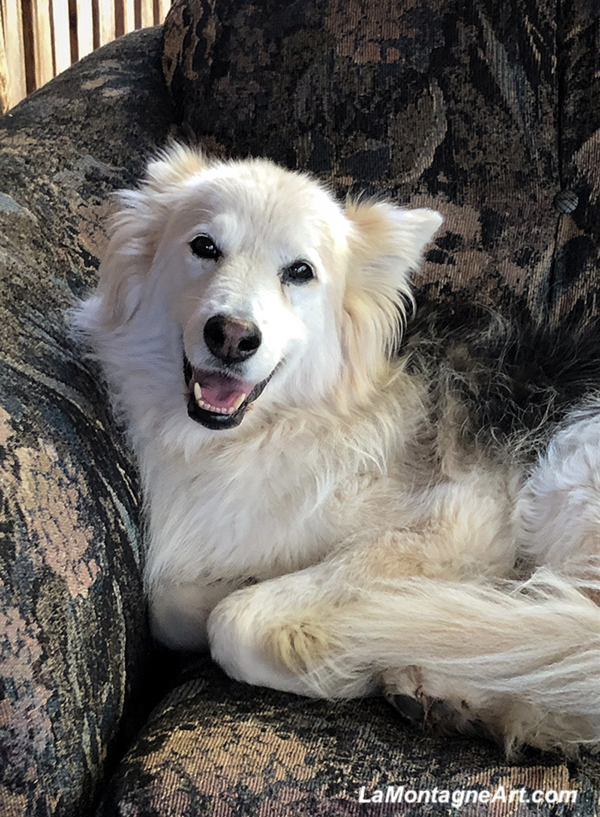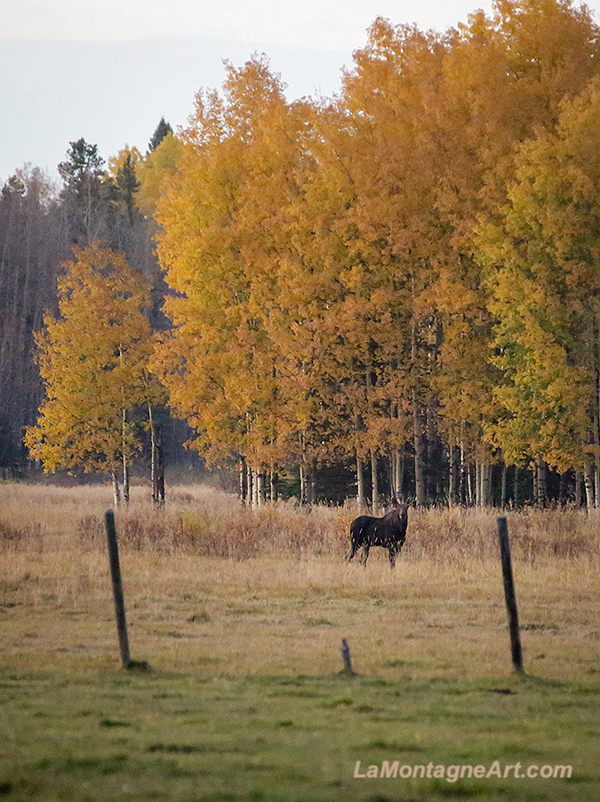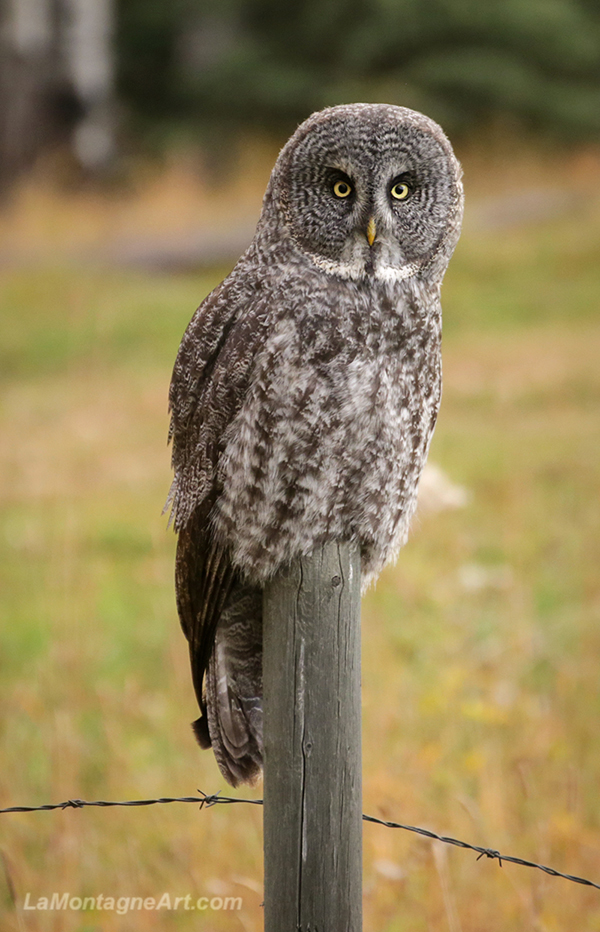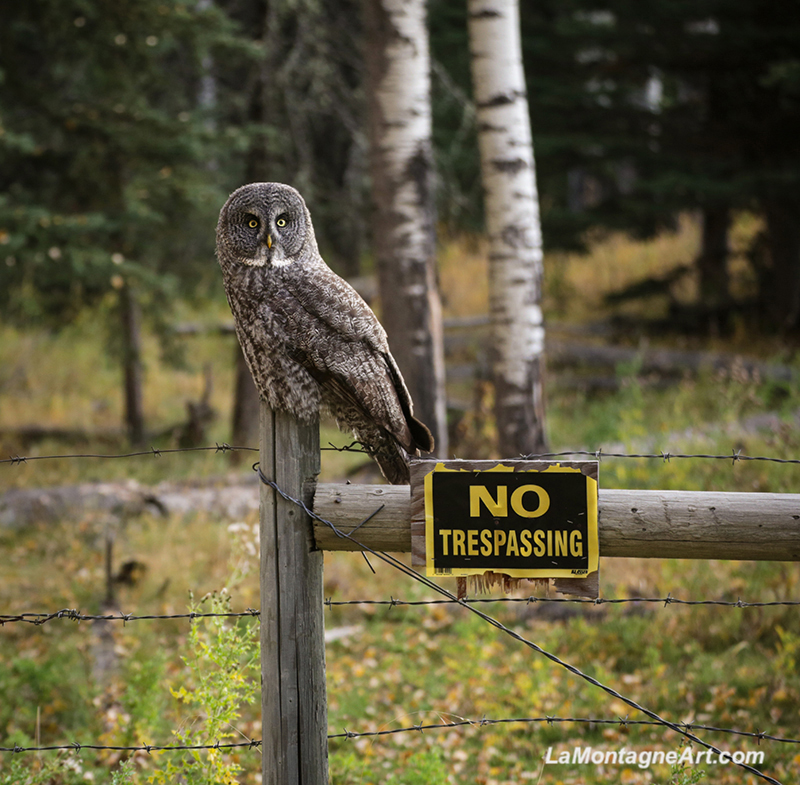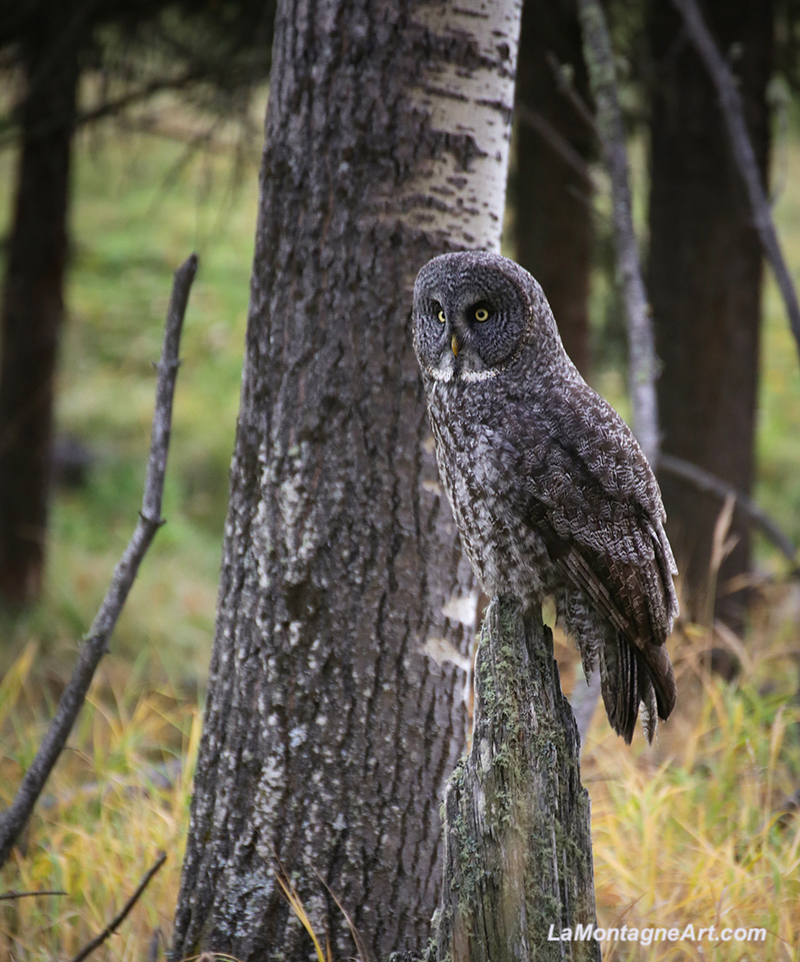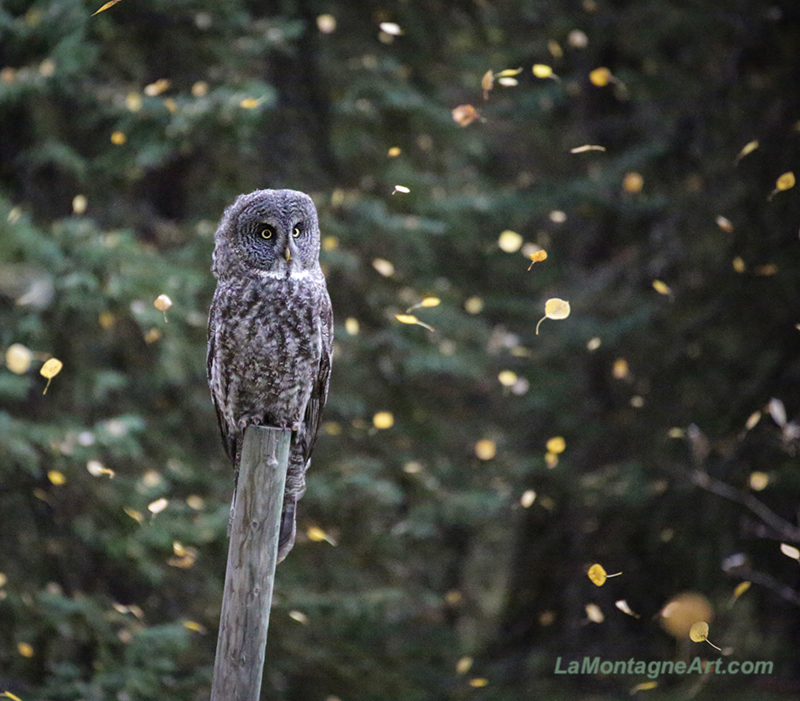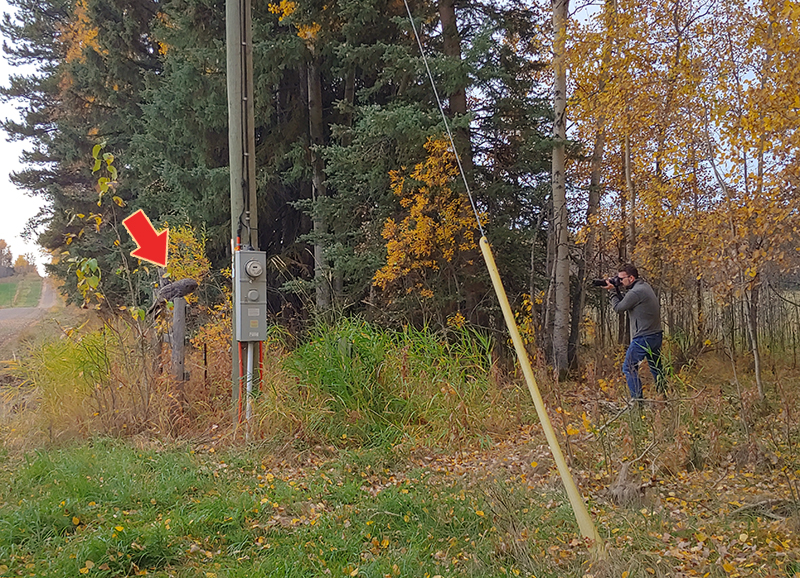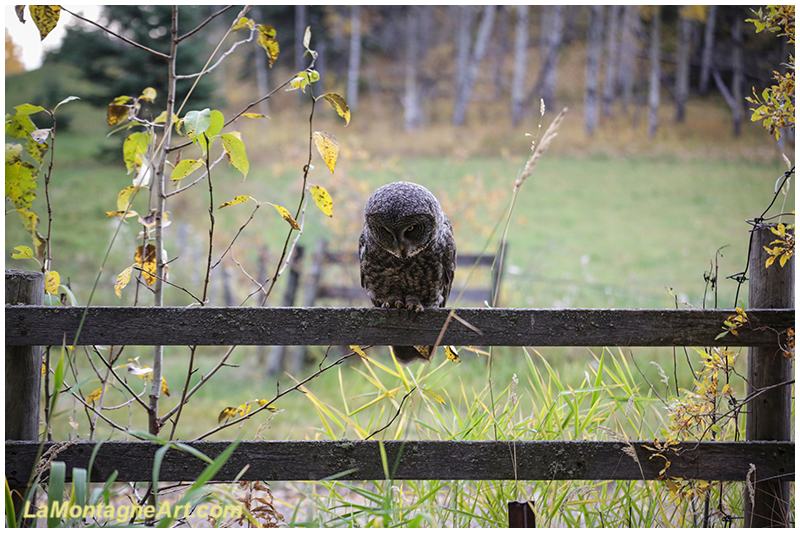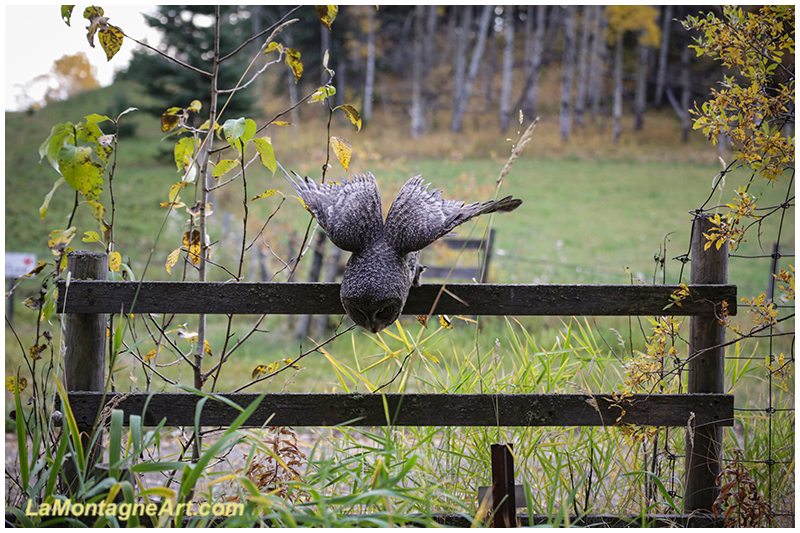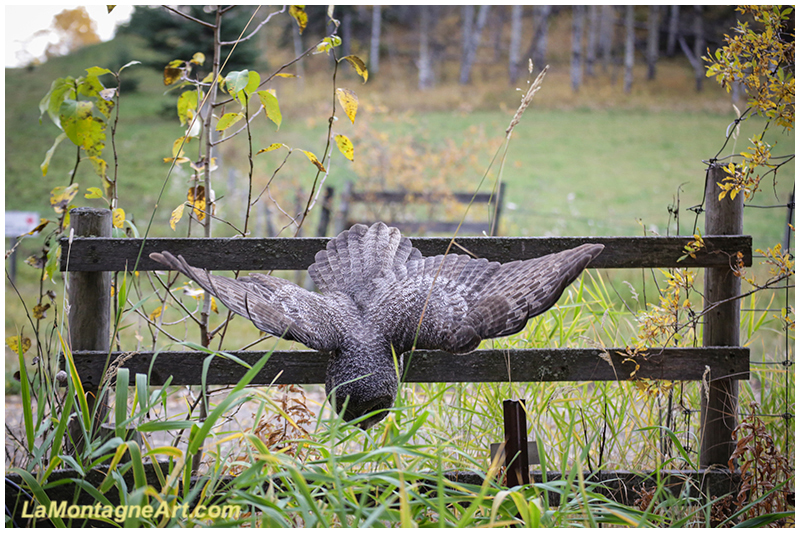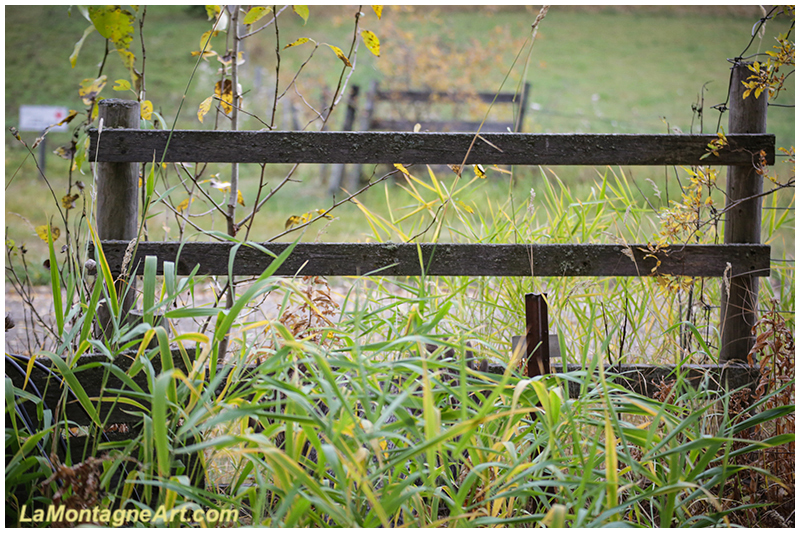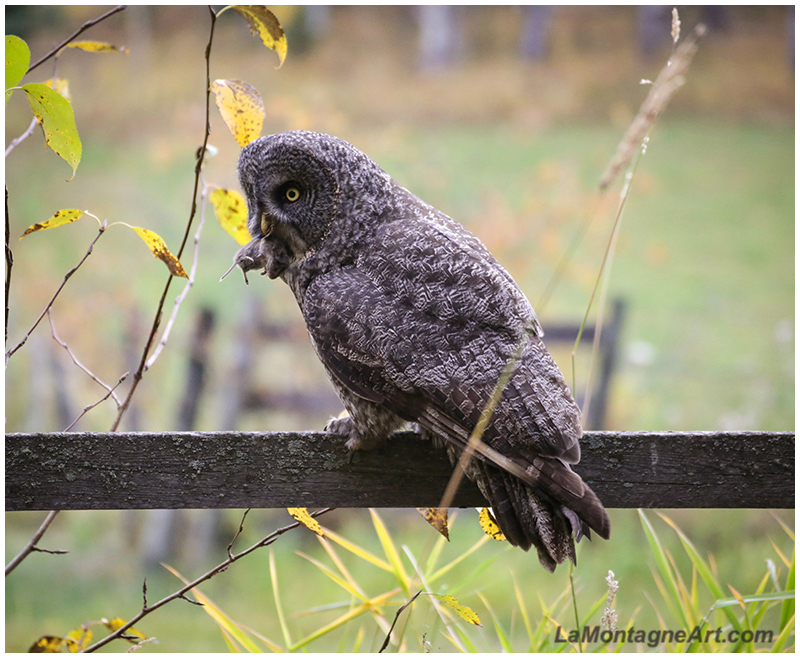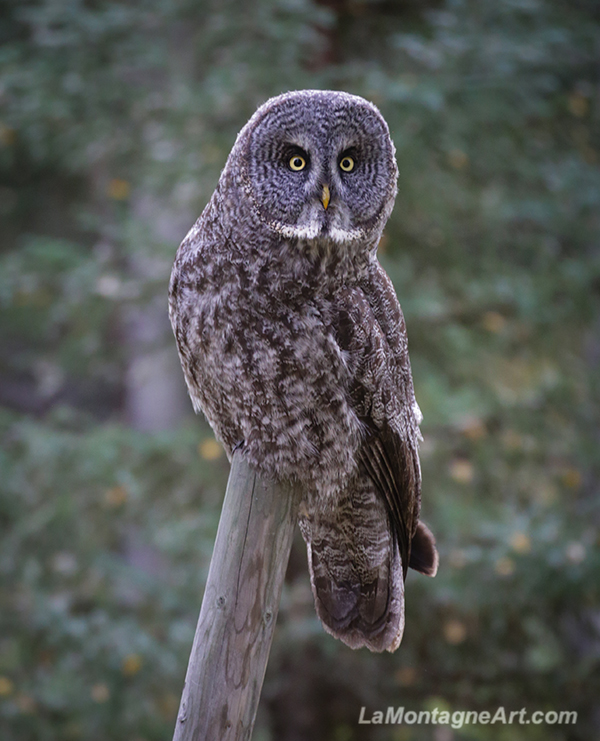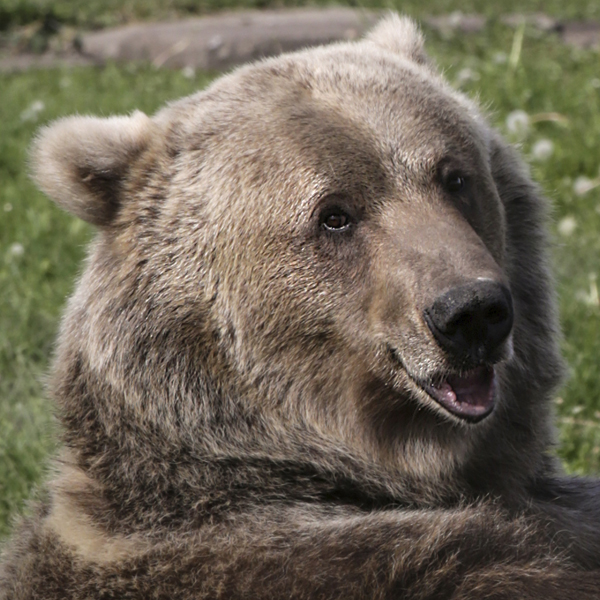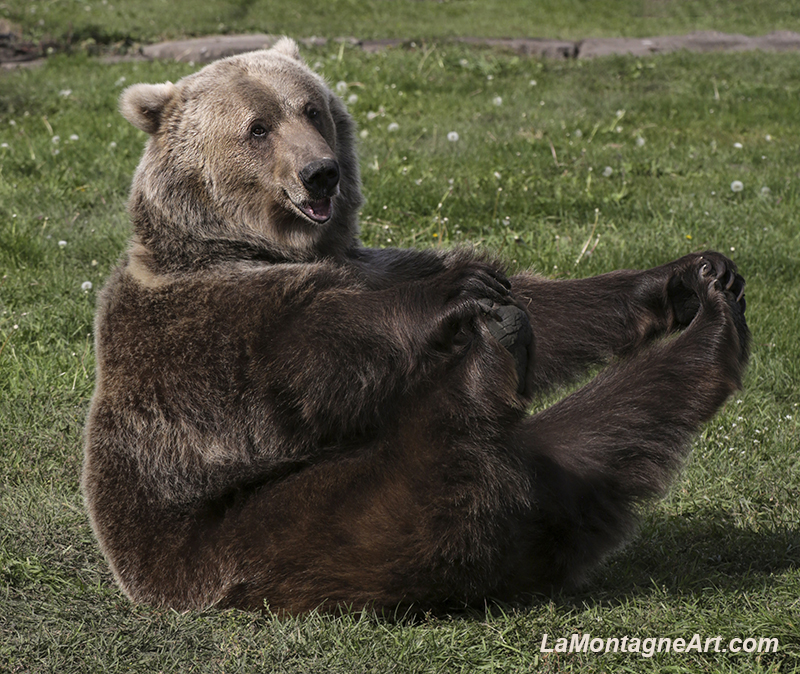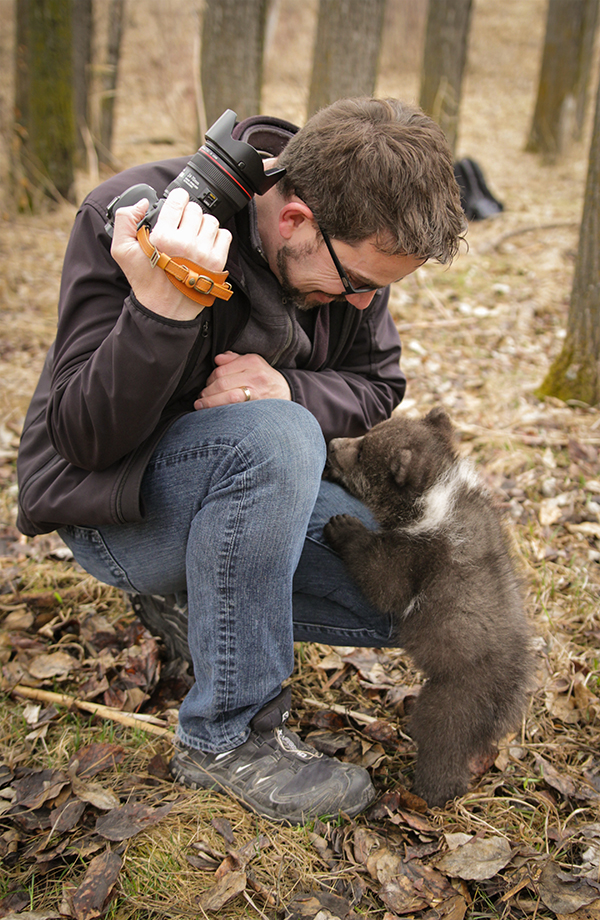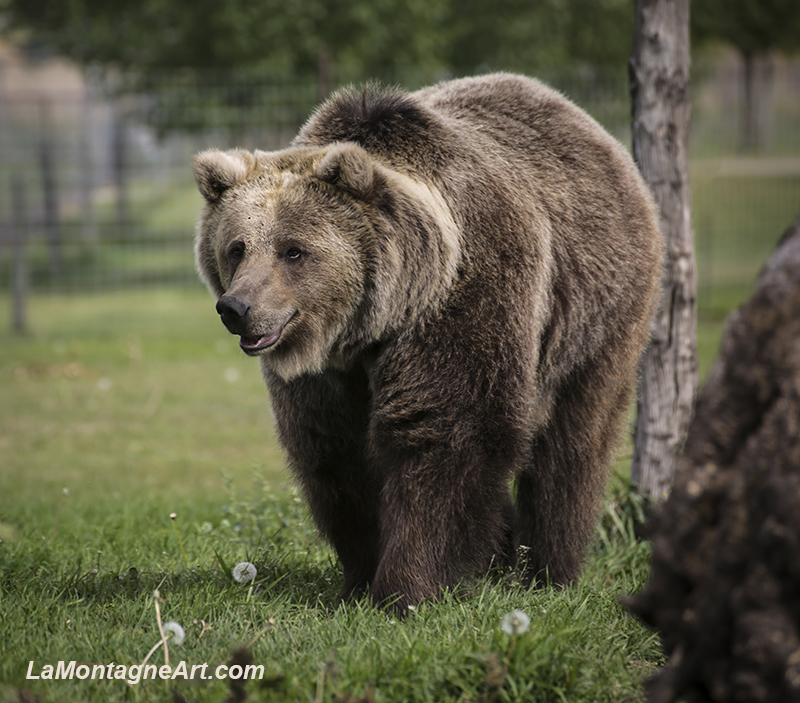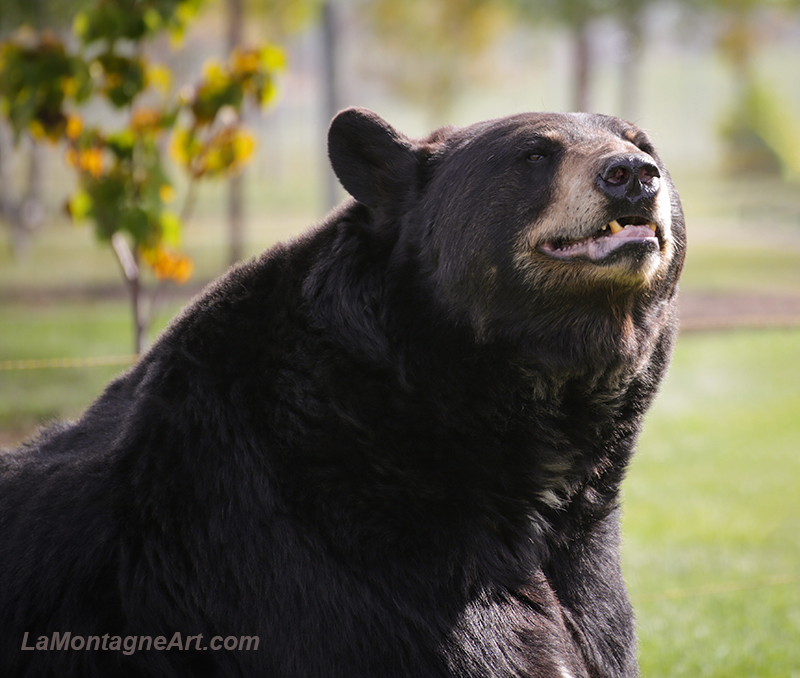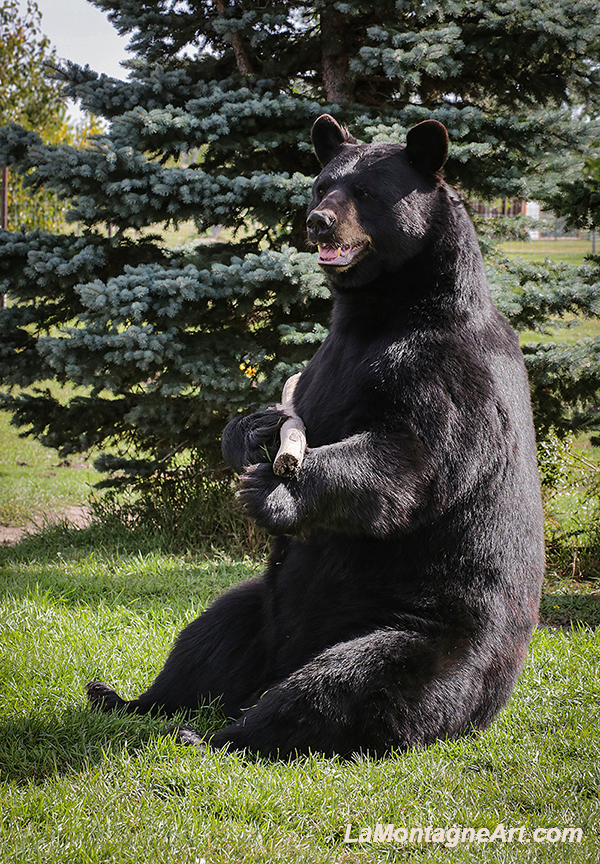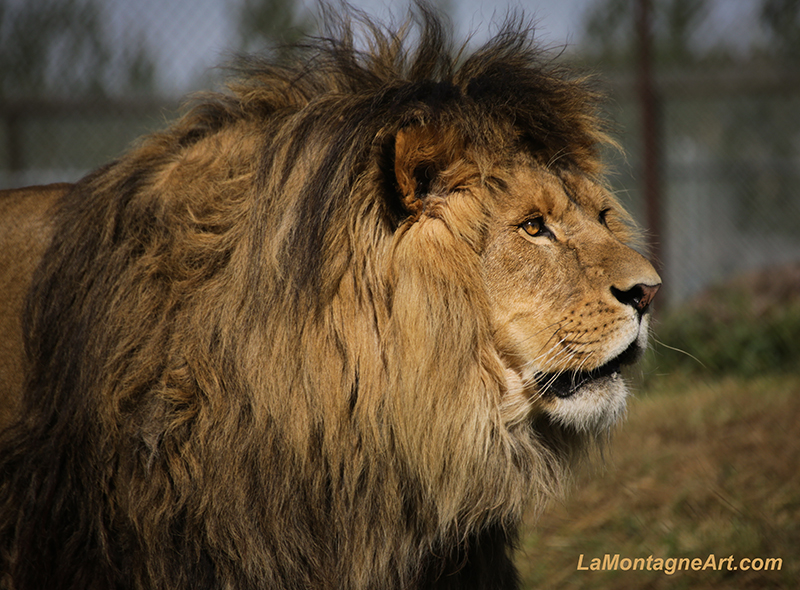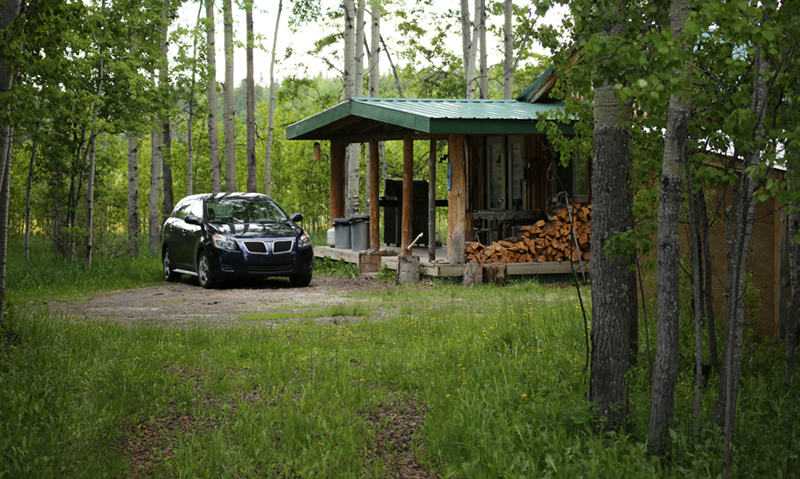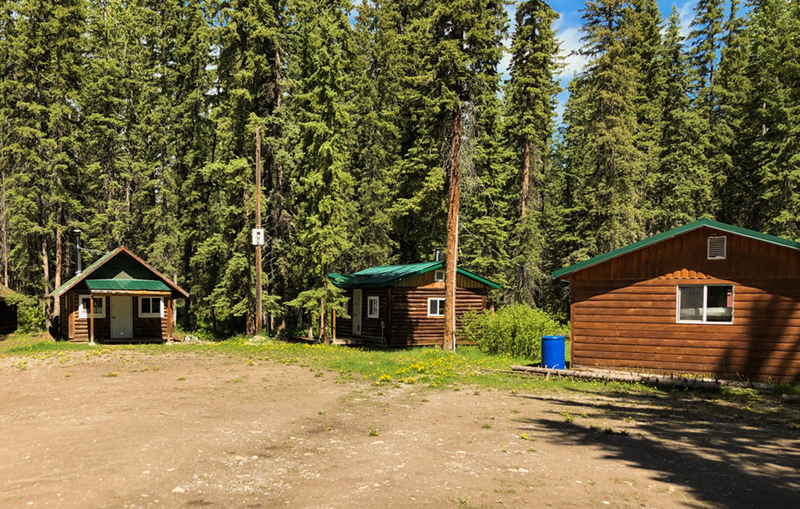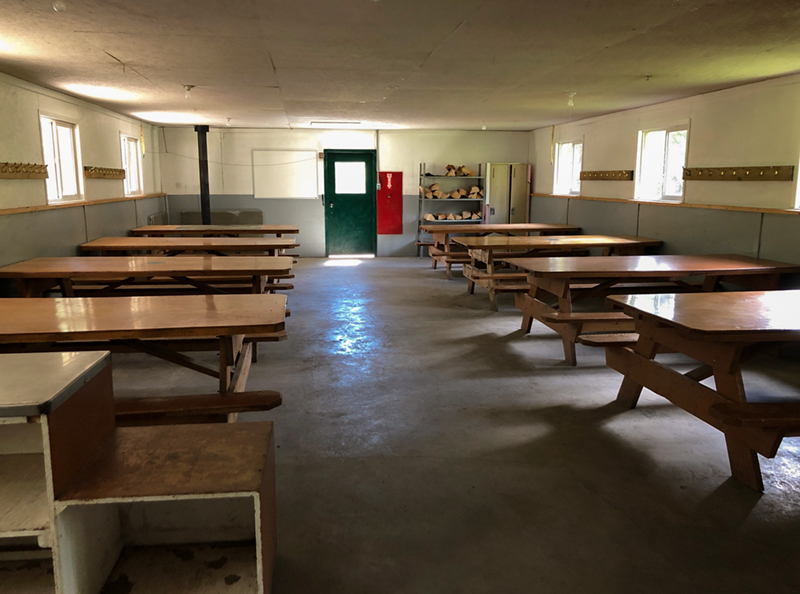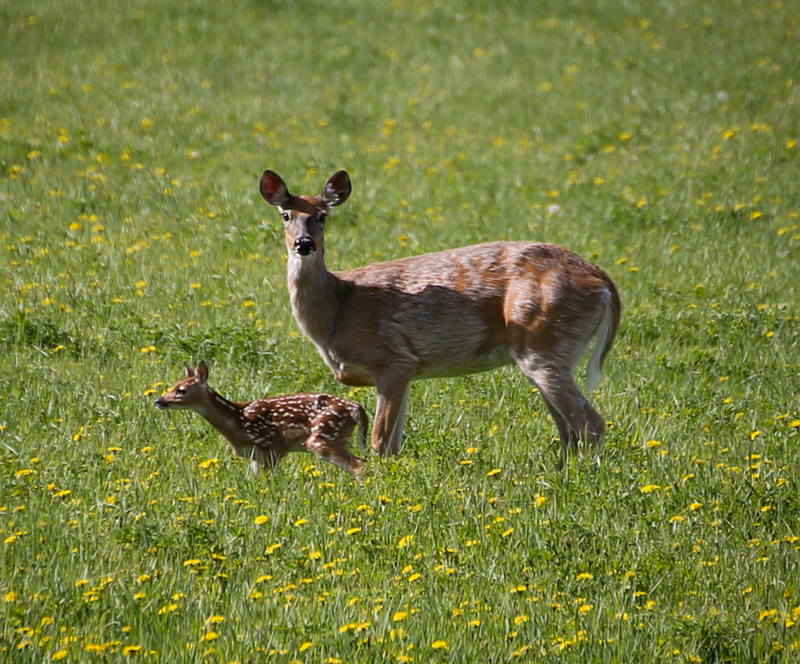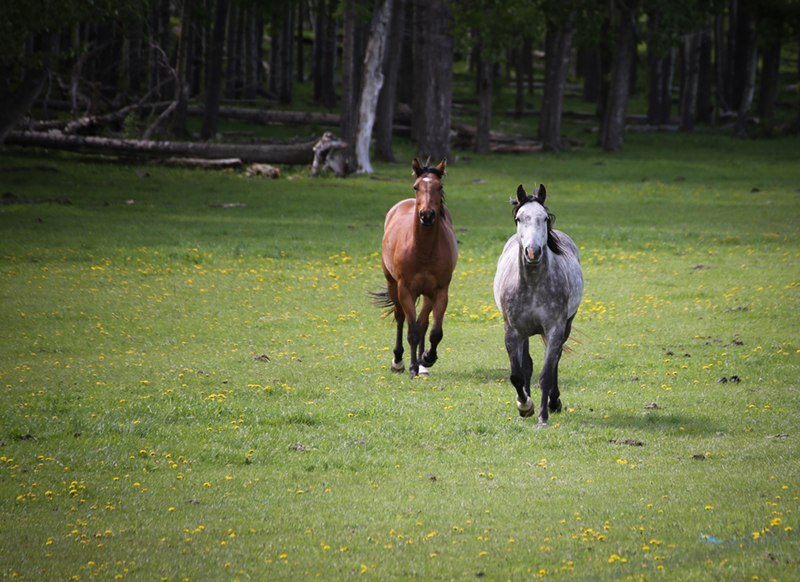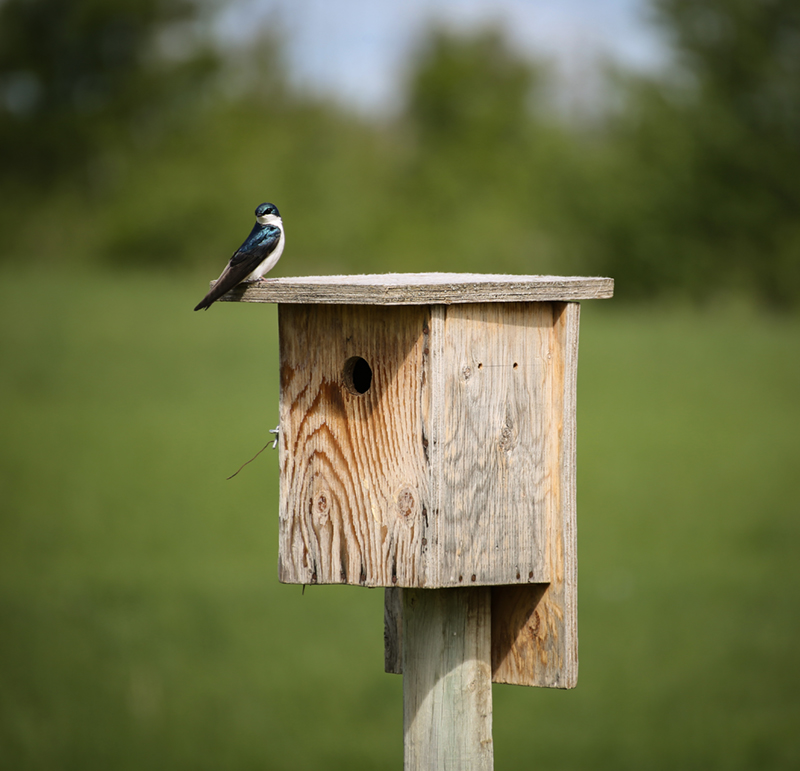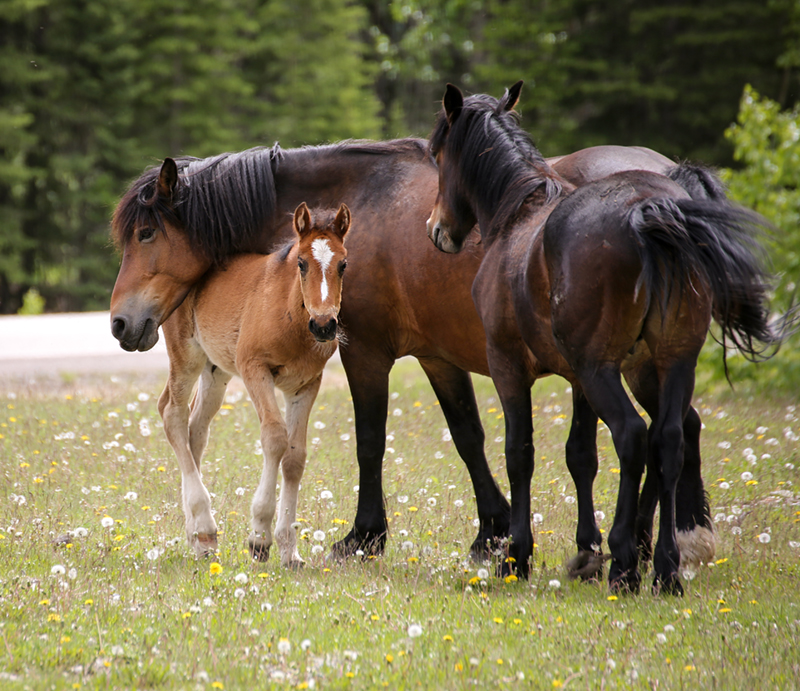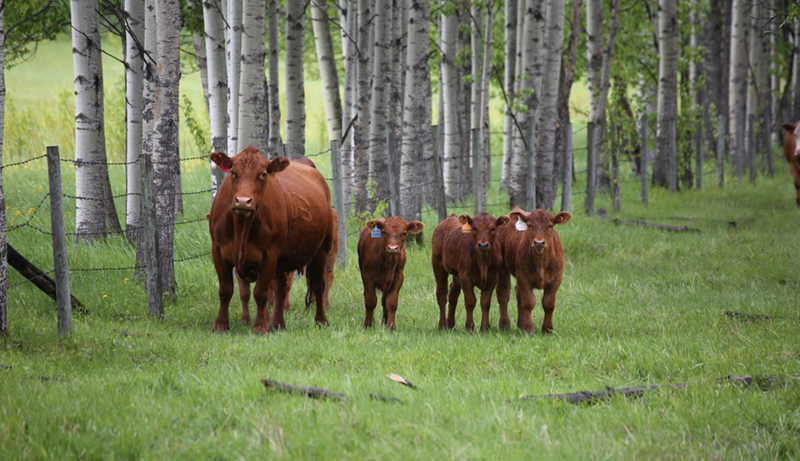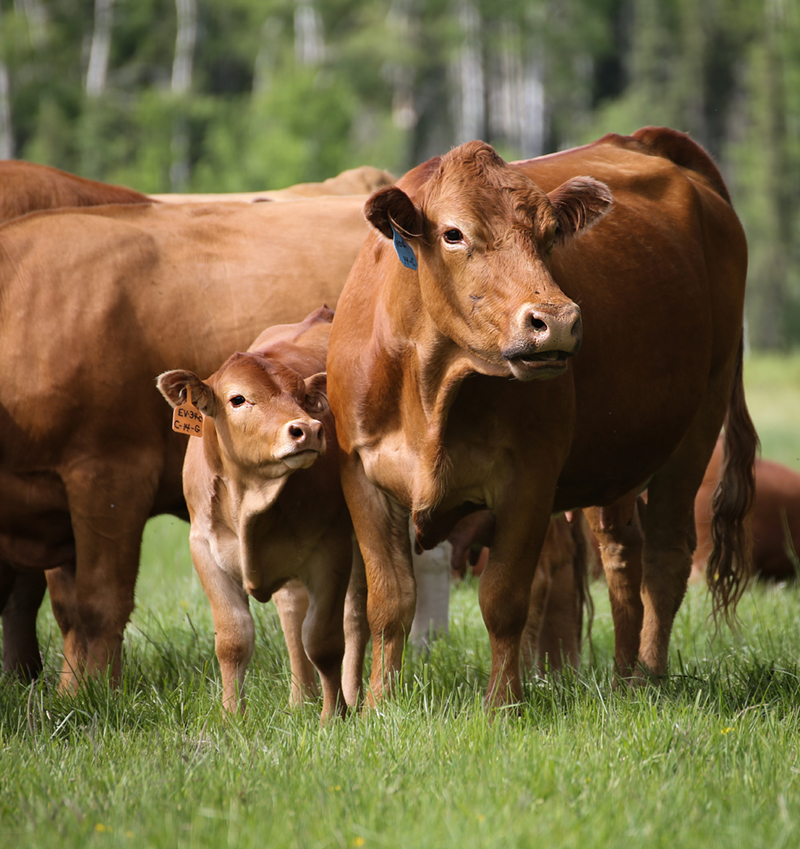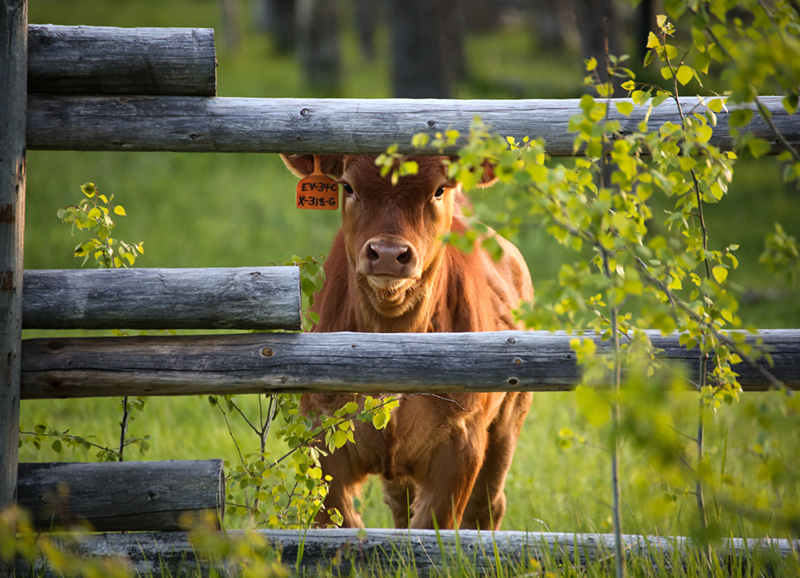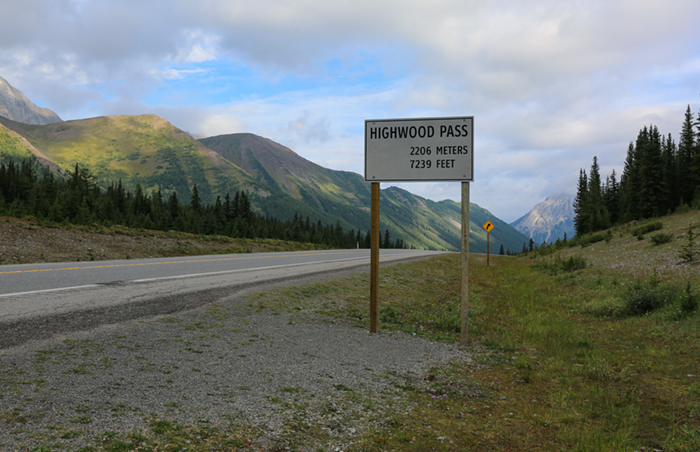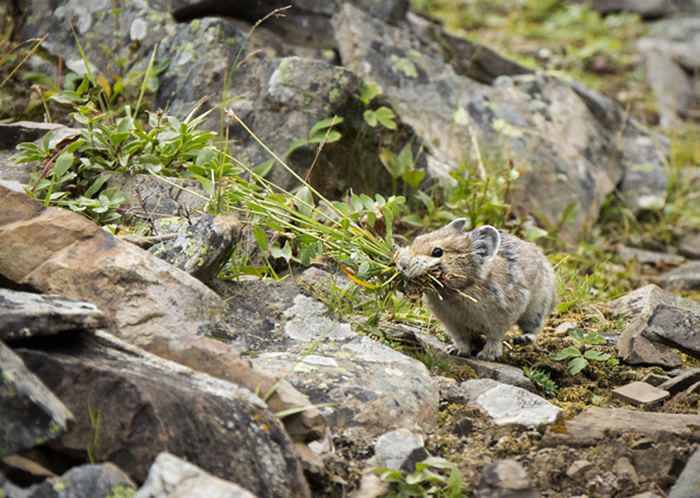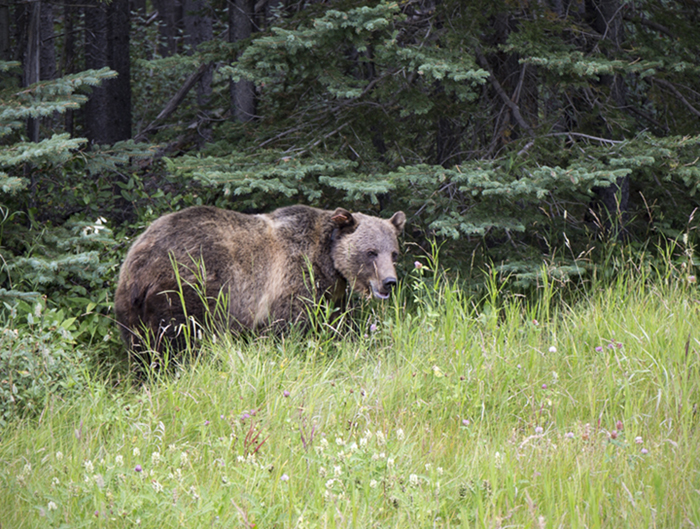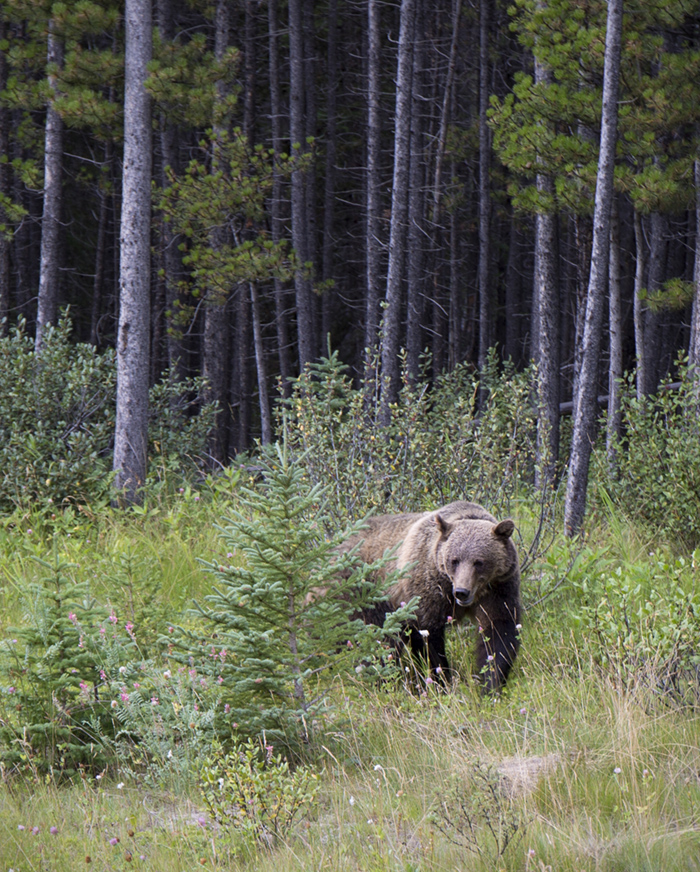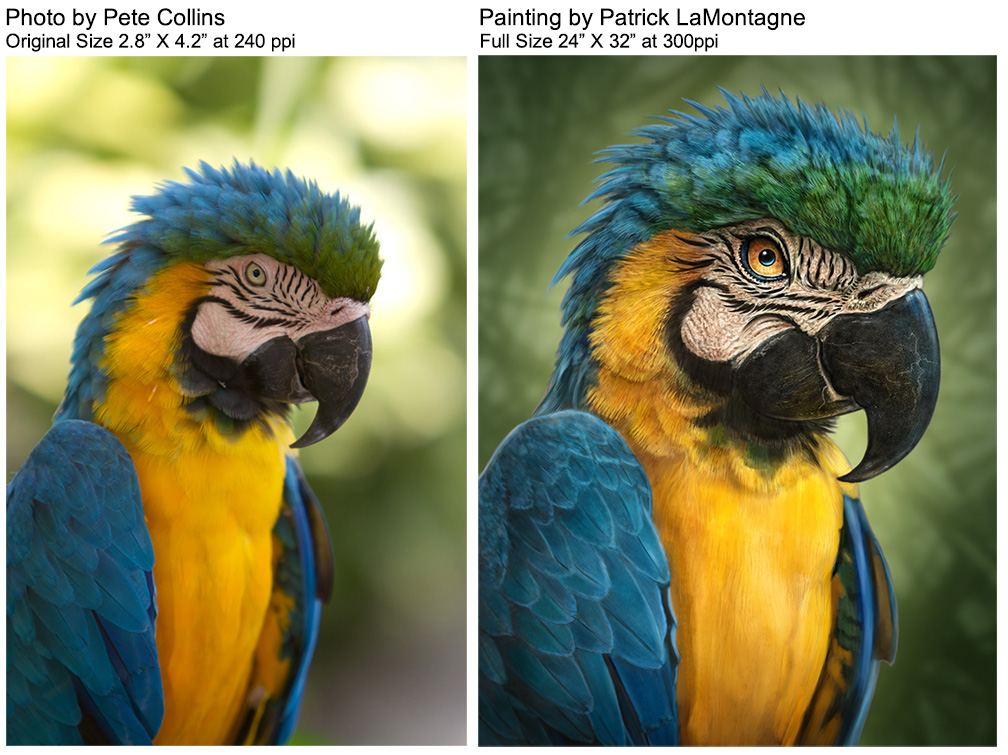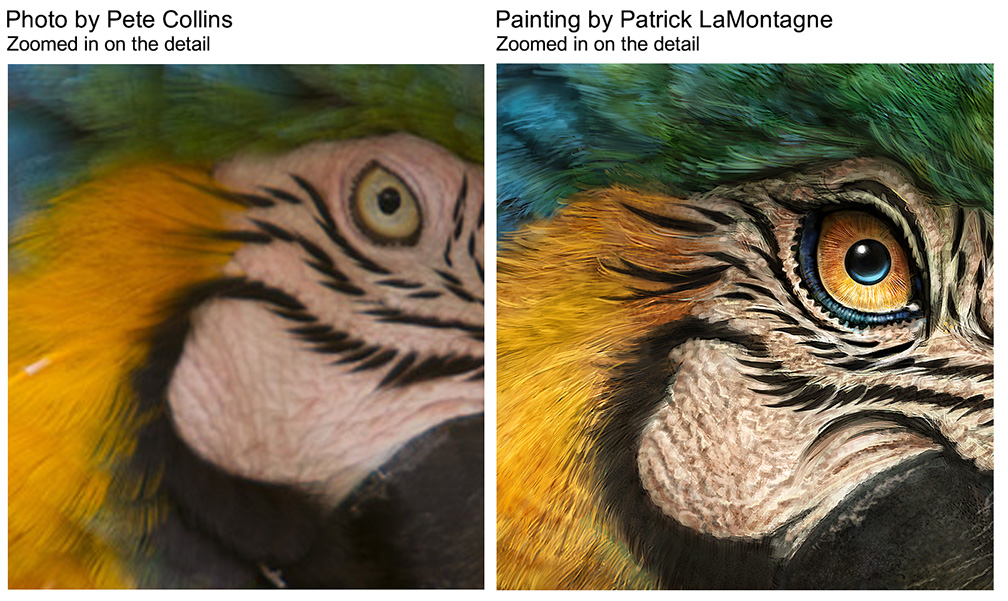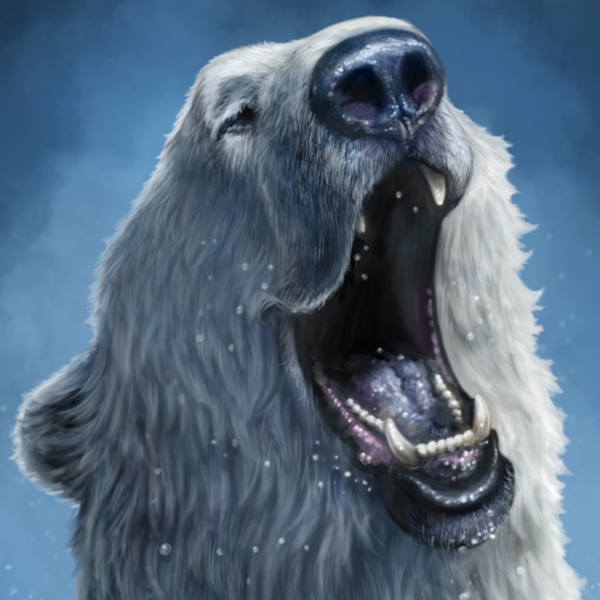
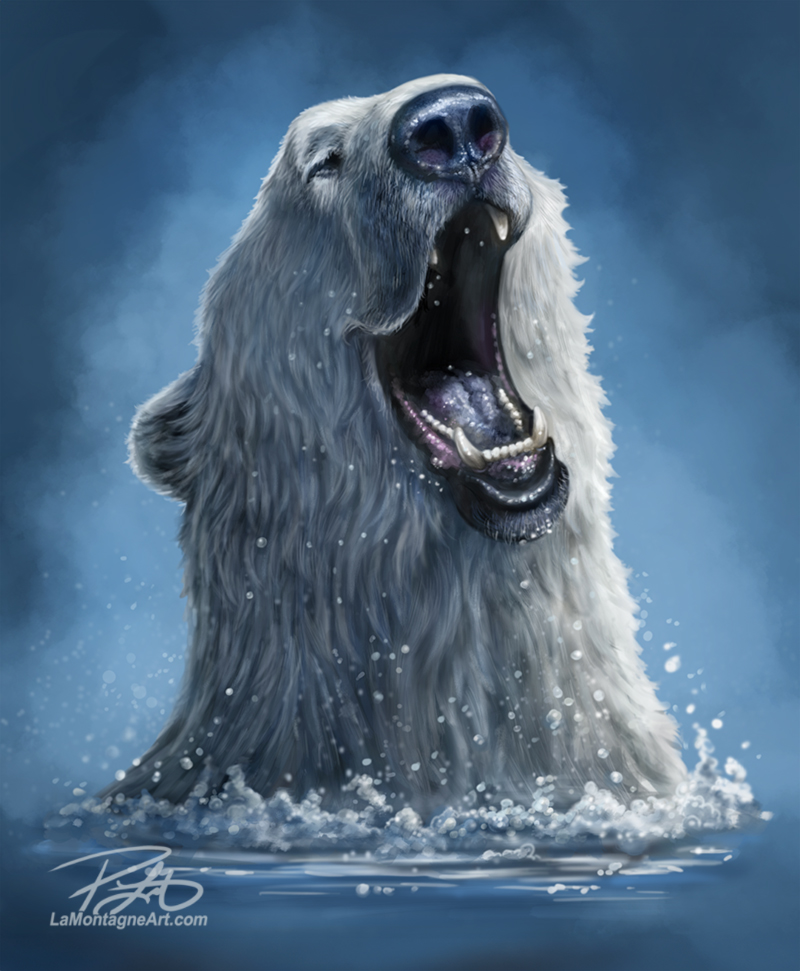
In June of last year, I painted my Big Bear on Blue polar bear painting, which is now a popular print. Pacific Music & Art used it as the cover of their 2025 calendar featuring my artwork. I like that painting and didn’t feel the need to create another polar bear image, at least not right away.
In July of last year, however, I shared the following sketch painting, the term I use for unfinished experiments. Because I had just painted a polar bear, I didn’t see the need to take it any further.
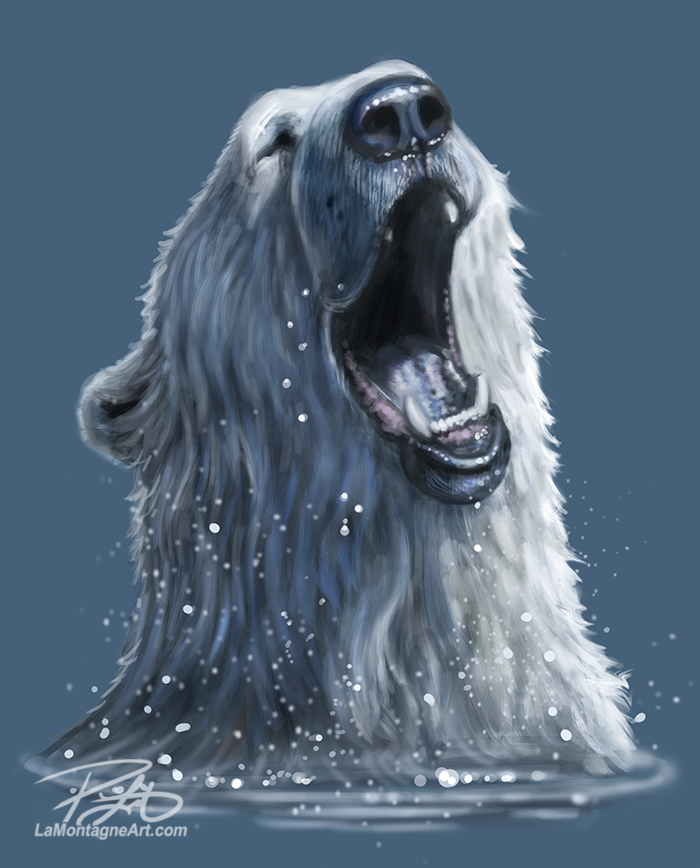 But it had received a positive response, and a few people sent me emails asking if I would finish it. So, over the last week, I put the time in to complete it, and I think Polar Plunge will be a nice addition to my print releases for spring.
But it had received a positive response, and a few people sent me emails asking if I would finish it. So, over the last week, I put the time in to complete it, and I think Polar Plunge will be a nice addition to my print releases for spring.
At the beginning of this year, I spent a few days looking through unfinished paintings. There are a couple I had forgotten about that I’d now like to dust off and complete, and I’d like to finish as many paintings in progress as I can before I start anything new.
I also created a 2025 list of folders with reference files, so I don’t have to wonder what’s coming next.
There’s always a short-lived high whenever I finish a painting. Years ago, it used to last for a week. Now, it lasts for about an hour, followed by a bit of a crash, for anywhere from a couple of days to a week. If I look through my reference files during that post-painting hangover, hoping to find the next idea, nothing inspires me.
This year, I decided to eliminate that problem. Art for a living is a job, and when one painting is finished, I need to start another, regardless of whether I feel like it. Thankfully, I now have 28 new folders containing reference images for paintings I can start right away. Some are paintings I need to finish, like the group of ring-tailed lemurs I’ve been working on. As I complete a painting, I’ll choose another folder and start the next one. And even if I’m not ‘feeling it,’ that will pass soon enough as I get into the new piece, because lost in the details of a painting is about as happy as I get.
I have never painted that many images in a year, but that’s not the goal. I simply now have 28 options and no excuses not to start a new piece.
When I’m not feeling especially creative, it helps to think of each painting as a commission. When clients pay me to paint their pets, I have a deadline or know that I’m wasting their time and money if I don’t work on their painting. Guilt is a strong motivator.
I’m trying to shift my perspective regarding my own paintings where I’m the client, and by not working, I’m wasting my own time and potential revenue.
I’m also working to create a new portfolio this year to attract new licensing clients. Even though many of my licenses aren’t exclusive, some companies are still reluctant to use an image on similar products if another company uses it, even if the market conflict is minimal. Anything can happen, and relying on only a few clients risks future income security. The loss of newspaper clients in recent years illustrates that point well.
While editorial cartooning is still a large part of my business, newspapers have experienced a steady decline for years, so it no longer provides a full-time income on its own. If I hadn’t had the whimsical wildlife side of my business, which is now the most significant portion of my income, I would have had to get a part-time job a few years ago.
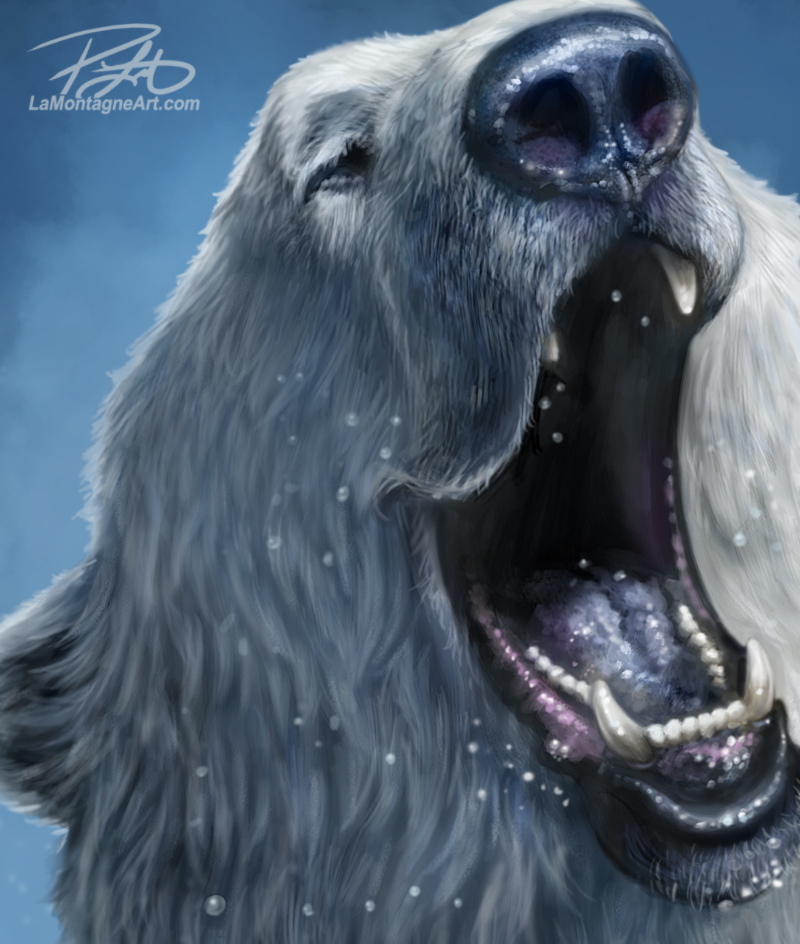 Last week, I delivered the year’s first print and sticker order to the Calgary Zoo. It was warm, with plenty of sunshine, and there weren’t many people. Even traffic was light, so I had an enjoyable day. When I got there, I chatted with the retail manager and the staff I know, then wandered through Canadian Wilds, my favourite part of the zoo.
Last week, I delivered the year’s first print and sticker order to the Calgary Zoo. It was warm, with plenty of sunshine, and there weren’t many people. Even traffic was light, so I had an enjoyable day. When I got there, I chatted with the retail manager and the staff I know, then wandered through Canadian Wilds, my favourite part of the zoo.
I texted my friend Kayla, one of the zookeepers, asking if she was working and where she was. She said she was in the North American porcupine enclosure, so I went there. Kayla was one of those who asked me if I was ever going to complete this new polar bear painting, so I was happy to tell her the finished painting was imminent.
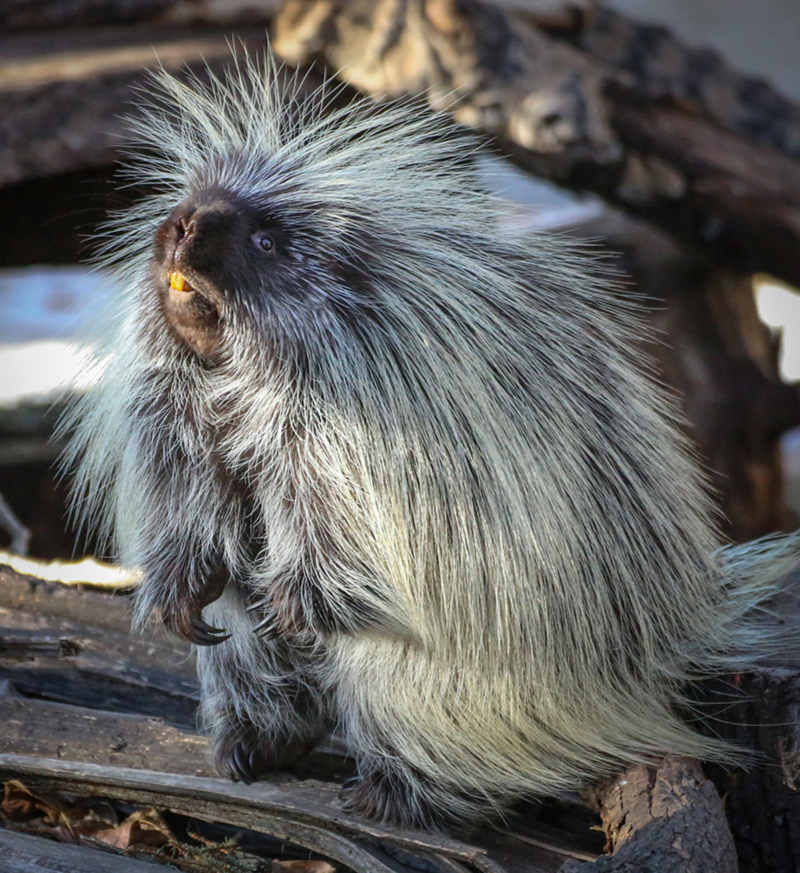 Porcupines are nocturnal, so they’re not active during the day, but like any animal, they’ll make an effort when food is involved. Because Kayla was inside the enclosure, feeding the cute and prickly resident, we had a nice chat while I got some decent reference shots. Add those to the ones I’ve taken at Discovery Wildlife Park, and there is now a Porcupine folder in my list of paintings I’d like to get to this year.
Porcupines are nocturnal, so they’re not active during the day, but like any animal, they’ll make an effort when food is involved. Because Kayla was inside the enclosure, feeding the cute and prickly resident, we had a nice chat while I got some decent reference shots. Add those to the ones I’ve taken at Discovery Wildlife Park, and there is now a Porcupine folder in my list of paintings I’d like to get to this year.
Though I took many more photos of different animals that day, most weren’t worth keeping. Bright sunny days and photography don’t usually mix. No matter how you compensate with camera settings, the lights end up too bright, the shadows too dark, and you can only fix so much in Photoshop. The sun is also low in the sky this time of year, which doesn’t help.
Normally, I’d be disappointed, but there have been plenty of days I’ve come home with dozens of shots worth keeping, and it often takes me years to get to them. And as I’ve explained, I have no shortage of paintings to get to this year. Hey, I delivered an order to one of my best customers, got out of the office, and had a nice day outside in the middle of winter. I have no complaints.
While I’ve recorded the occasional high-speed video for YouTube, it’s been quite a while, and I want to get back to using that platform to help promote my work. I’ve been spending a lot of time lately learning to use new recording software and hardware. Something many artists don’t realize when they want to turn their hobby into their work is that the business and promotion side of self-employment requires constant adaptation and continuing education. While it takes time away from creating art, it’s necessary for career longevity. Just because something worked well ten years ago, doesn’t mean it will today.
While I’m learning the ropes of these new tools and preparing to create more videos, I’ve got a few more paintings in progress to complete, and as I do, I look forward to sharing them with you.



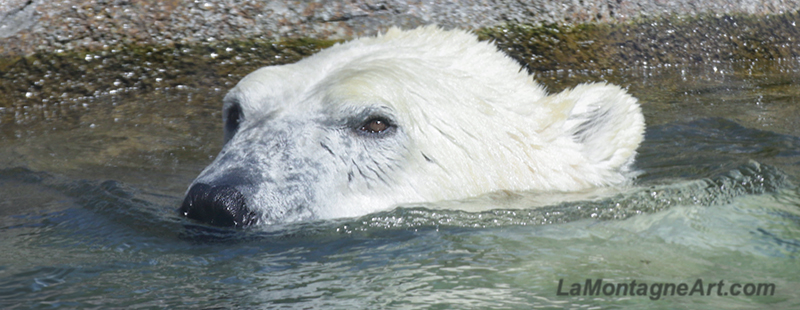 Because of my current workload and deadlines, I haven’t been able to get away for reference photos lately. Shonna and I want to see our families and visit
Because of my current workload and deadlines, I haven’t been able to get away for reference photos lately. Shonna and I want to see our families and visit 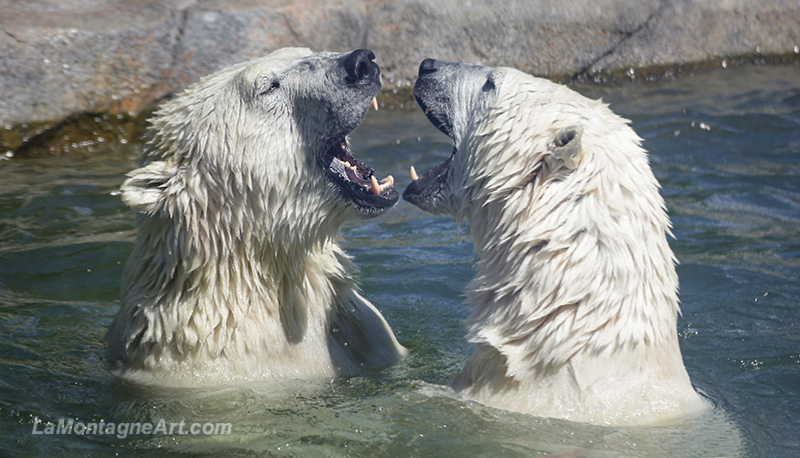 When I got to the new polar bear habitat, I was surprised to find both bears sparring with each other in their smaller splash pool. They have a much larger pool, but this was clearly where they wanted to be. Baffin and Siku seemed to be having a great time, wrestling, biting, and pushing each other under the water.
When I got to the new polar bear habitat, I was surprised to find both bears sparring with each other in their smaller splash pool. They have a much larger pool, but this was clearly where they wanted to be. Baffin and Siku seemed to be having a great time, wrestling, biting, and pushing each other under the water.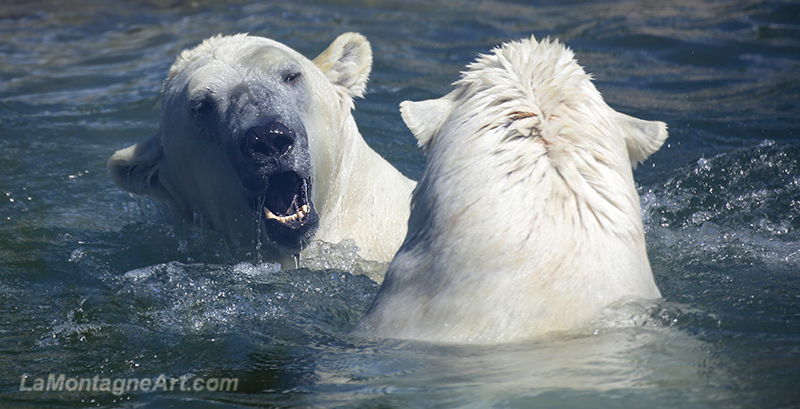 Though I have just finished a polar bear painting and haven’t time to start another one, I took plenty of references for future projects.
Though I have just finished a polar bear painting and haven’t time to start another one, I took plenty of references for future projects.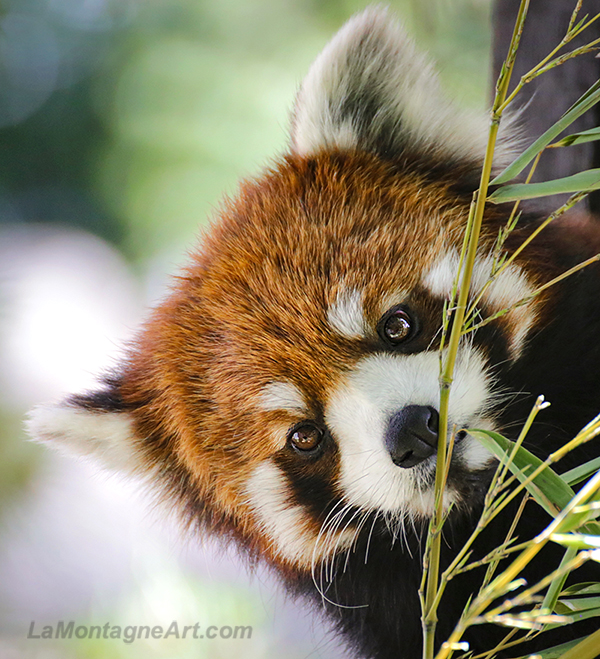 Finally, at the other end of the zoo, I caught the red pandas awake and playful and took photos that will no doubt inspire paintings down the road. One had found a perch high in a tree, balanced over a branch, in a comically lazy pose. There’s painting potential there.
Finally, at the other end of the zoo, I caught the red pandas awake and playful and took photos that will no doubt inspire paintings down the road. One had found a perch high in a tree, balanced over a branch, in a comically lazy pose. There’s painting potential there.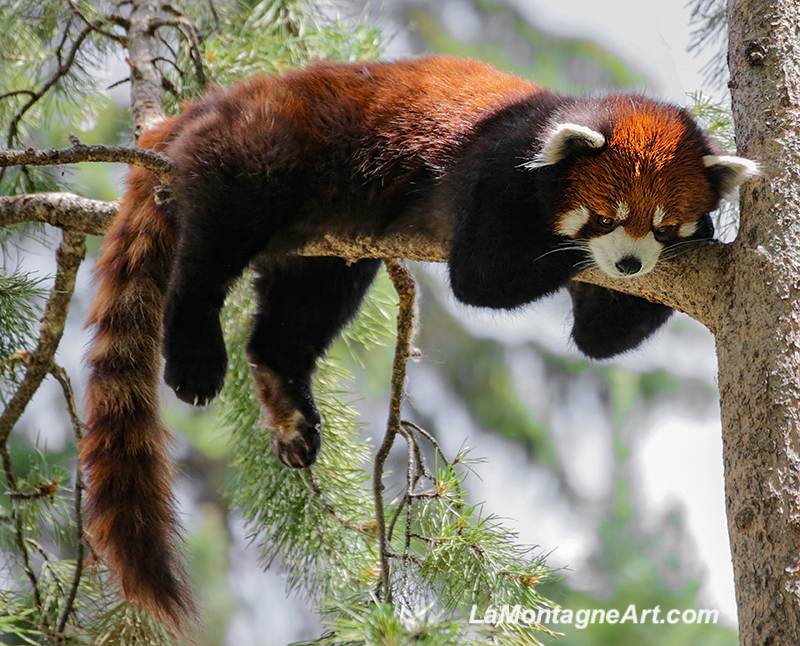 After only a couple of hours, I was more than ready to head home, sort through the pics, and finish drawing an
After only a couple of hours, I was more than ready to head home, sort through the pics, and finish drawing an 

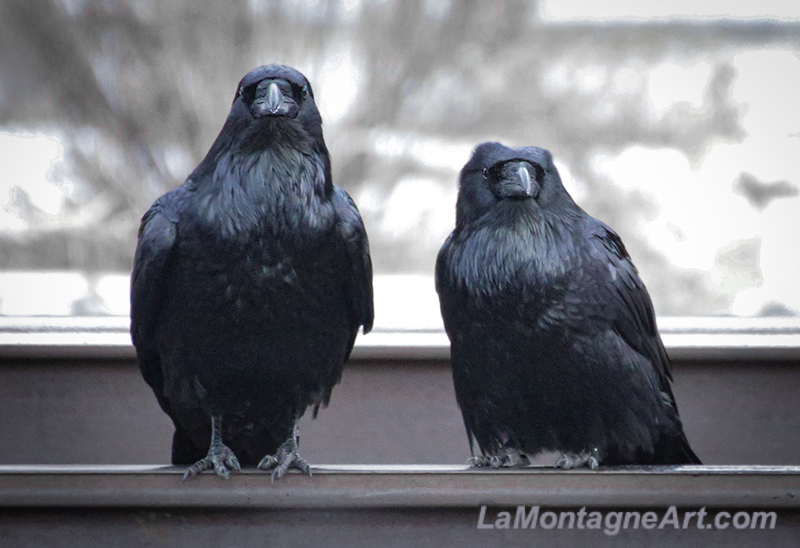 You can attribute it to seasonal affective disorder, lack of light, or the extreme cold weather that settled in this week, but January is not my favourite month. I am at my most miserable and misanthropic this time of year, coupled with a short fuse. My jaw has been bugging me for a couple of weeks, a consequence of unconscious clenching and teeth grinding. I’m not sleeping well and have bad dreams.
You can attribute it to seasonal affective disorder, lack of light, or the extreme cold weather that settled in this week, but January is not my favourite month. I am at my most miserable and misanthropic this time of year, coupled with a short fuse. My jaw has been bugging me for a couple of weeks, a consequence of unconscious clenching and teeth grinding. I’m not sleeping well and have bad dreams.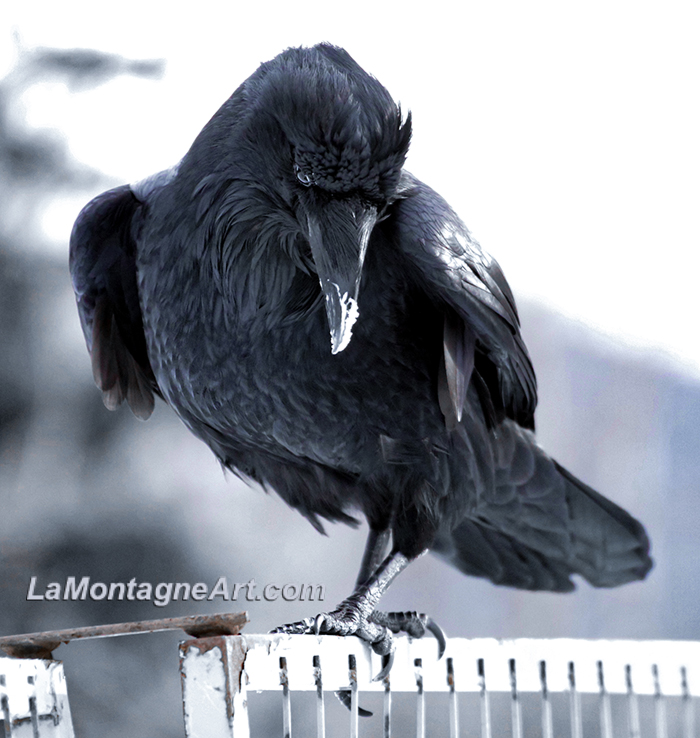 But at the moment, each
But at the moment, each 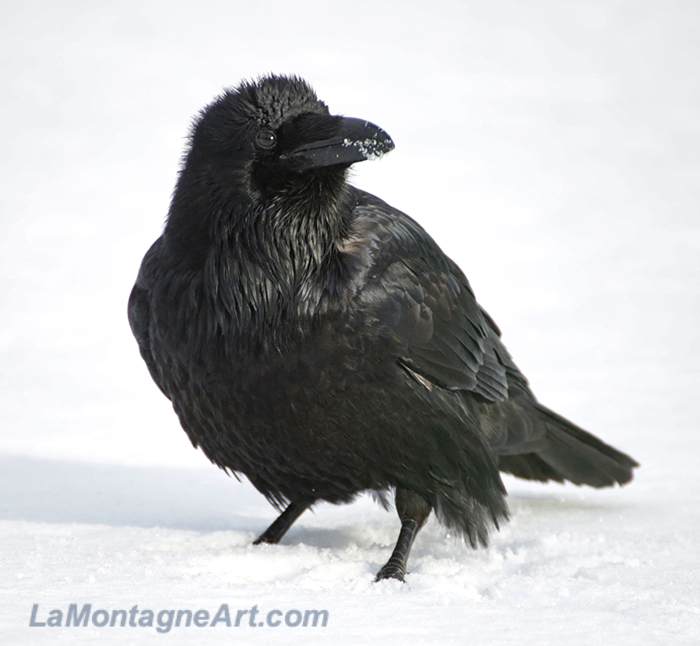 On the way, there’s a long stretch of paved pathway beside the train tracks. It runs behind another grocery store, recycling drop-off, and Canadian Tire and several ravens hang out in the area, scavenging for scraps.
On the way, there’s a long stretch of paved pathway beside the train tracks. It runs behind another grocery store, recycling drop-off, and Canadian Tire and several ravens hang out in the area, scavenging for scraps.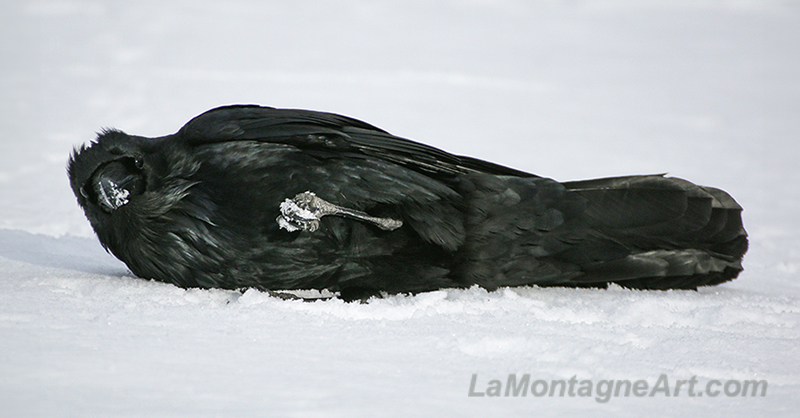 But when a raven flops down on his back and rolls around in the snow, pausing several times to look right into my lens, it’s hard not to imagine it’s doing it for my benefit. I took quite a few shots of this clown before he (or she) finally got back on his feet.
But when a raven flops down on his back and rolls around in the snow, pausing several times to look right into my lens, it’s hard not to imagine it’s doing it for my benefit. I took quite a few shots of this clown before he (or she) finally got back on his feet.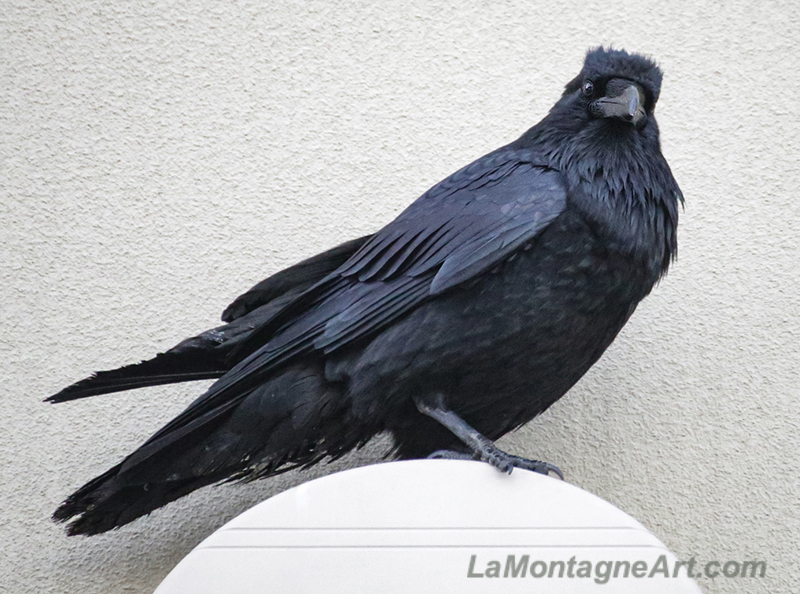 Thanks to a recent photo tip technique on my friend
Thanks to a recent photo tip technique on my friend 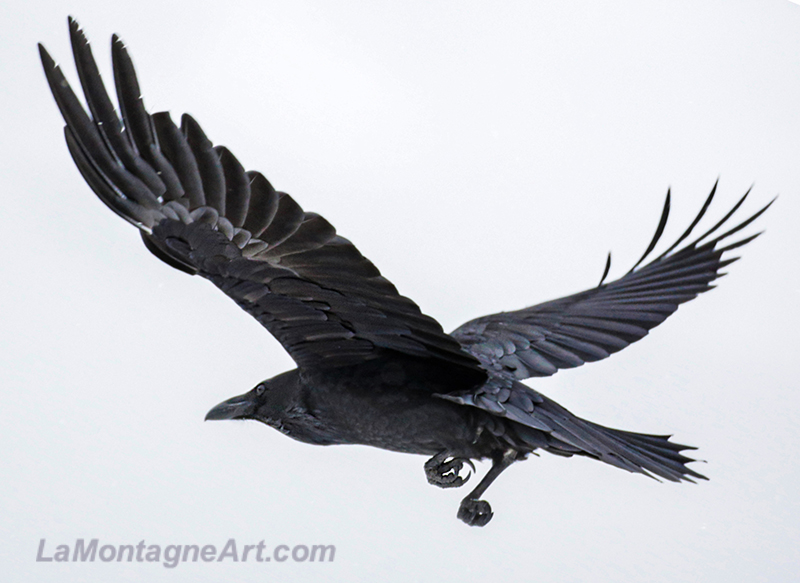 While a professional photographer might deem them unworthy for prints or portfolio pieces, I use the photos strictly for reference, so any flaws don’t matter.
While a professional photographer might deem them unworthy for prints or portfolio pieces, I use the photos strictly for reference, so any flaws don’t matter.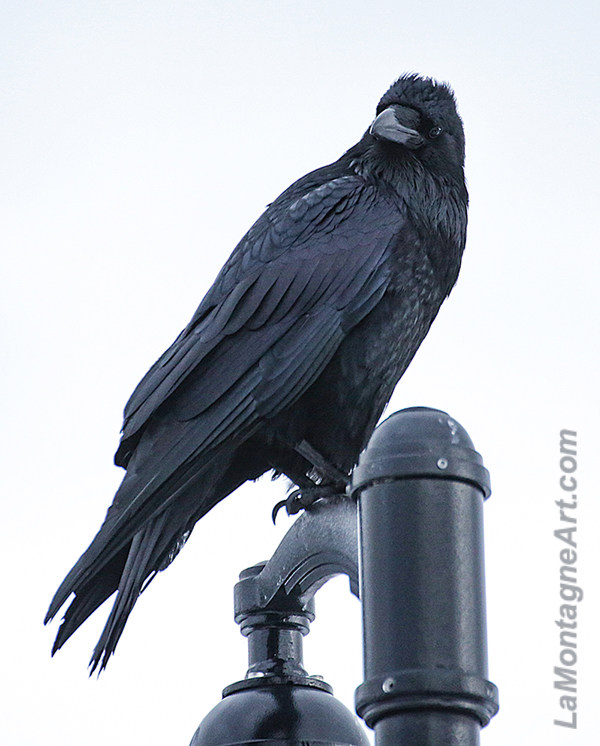 Though I’m struggling to find my creative spark right now, I know it will return as spring gets closer, and my mood will improve with more sunlight and warmer weather. It always does. And should I want to paint more ravens then, I’ll be grateful I forced myself to get out now and that I took my camera with me, even though I didn’t feel like it.
Though I’m struggling to find my creative spark right now, I know it will return as spring gets closer, and my mood will improve with more sunlight and warmer weather. It always does. And should I want to paint more ravens then, I’ll be grateful I forced myself to get out now and that I took my camera with me, even though I didn’t feel like it.

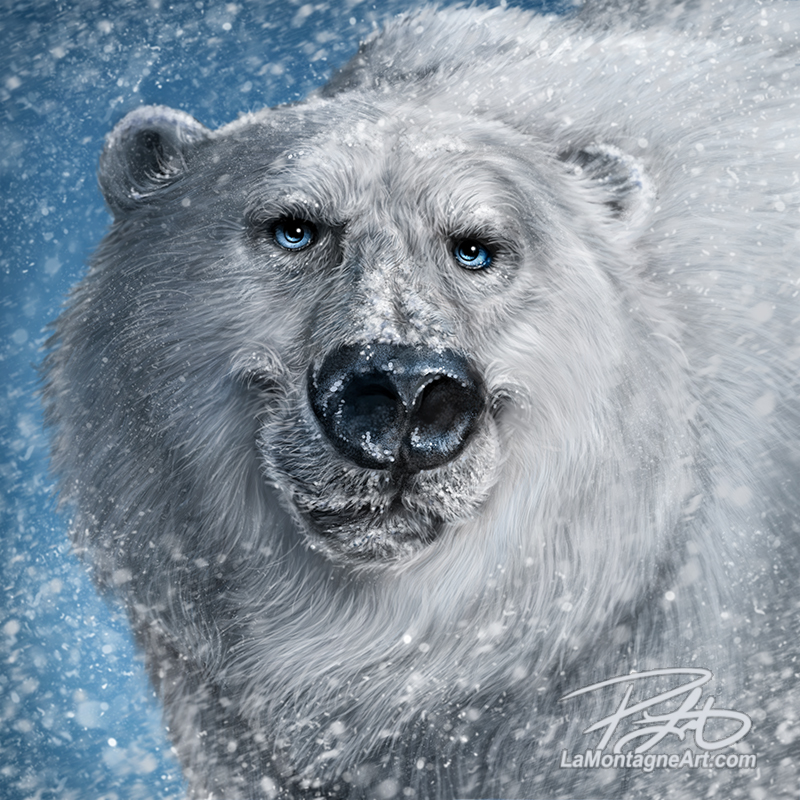 While I’m not a big fan of the season, I love winter colours, the blues, greys and whites. Seems like I’m on a bit of a
While I’m not a big fan of the season, I love winter colours, the blues, greys and whites. Seems like I’m on a bit of a 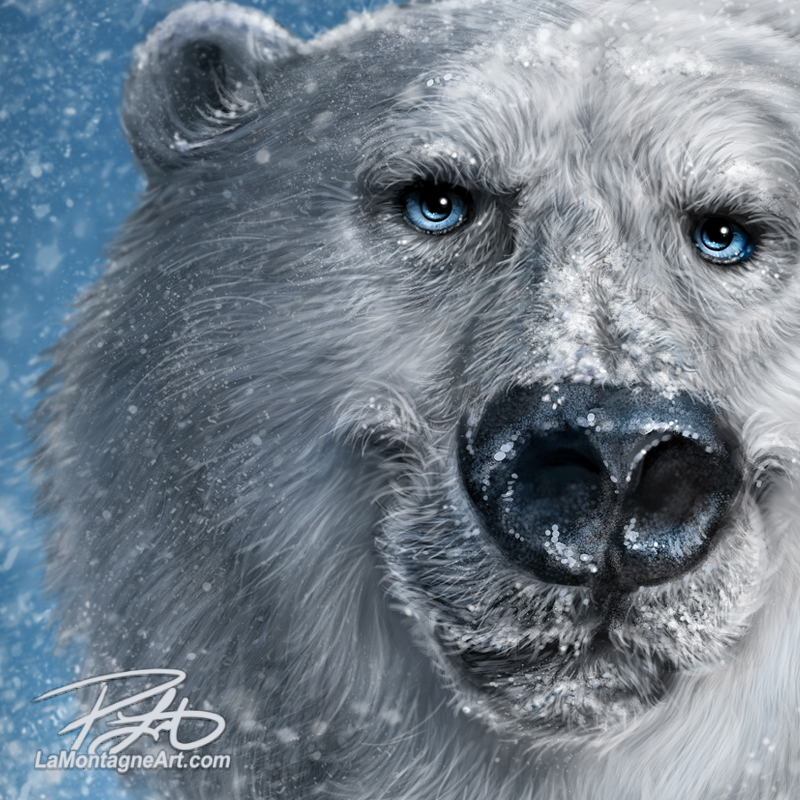 My friend
My friend 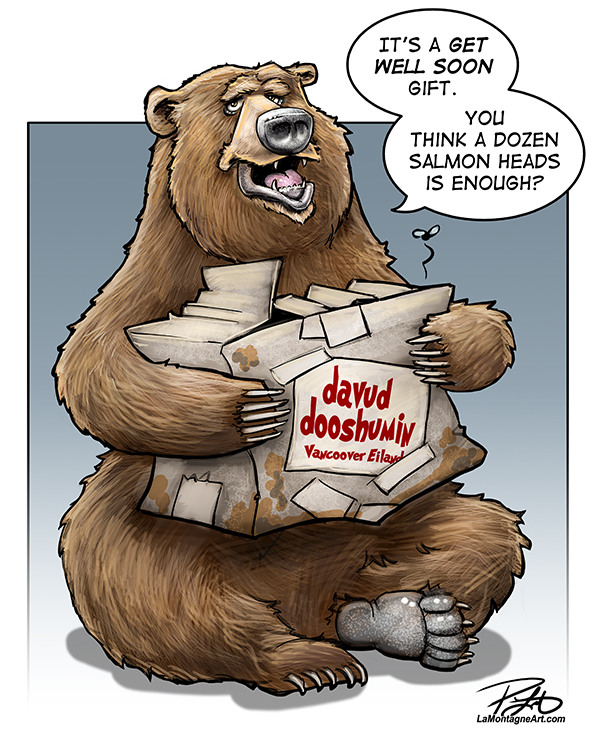
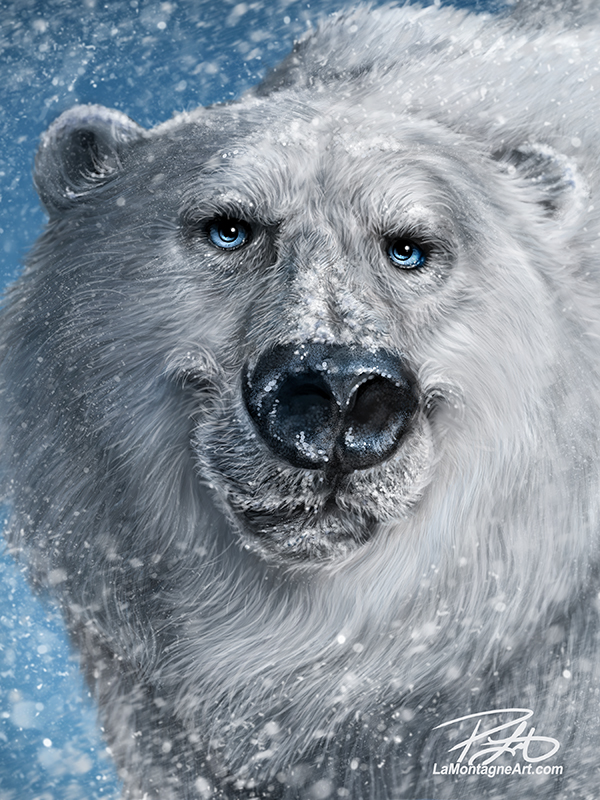 One of the challenges with a square format painting is that I need to crop it for my standard 11”x14” print, either vertical or horizontal. I tried both layouts, and vertical was the clear winner. Of course, you can always order the original square format as a canvas or metal print.
One of the challenges with a square format painting is that I need to crop it for my standard 11”x14” print, either vertical or horizontal. I tried both layouts, and vertical was the clear winner. Of course, you can always order the original square format as a canvas or metal print. 
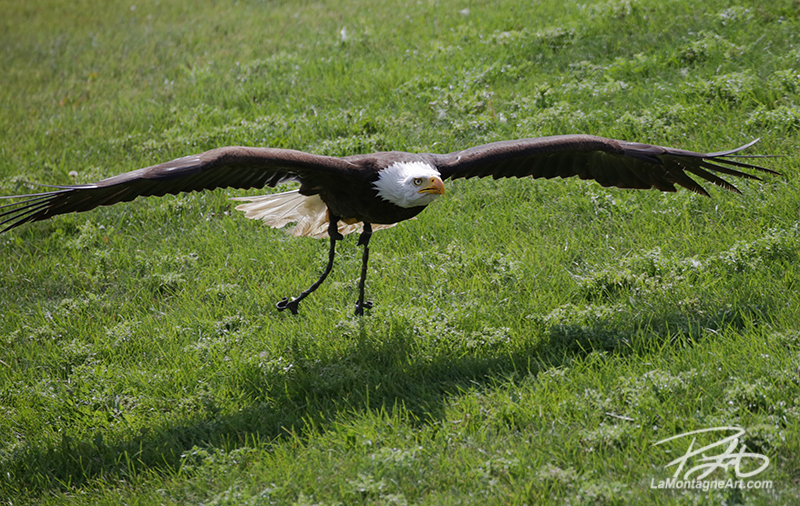 This past Thursday, I drove the four hours down to Coaldale, Alberta, to visit the
This past Thursday, I drove the four hours down to Coaldale, Alberta, to visit the 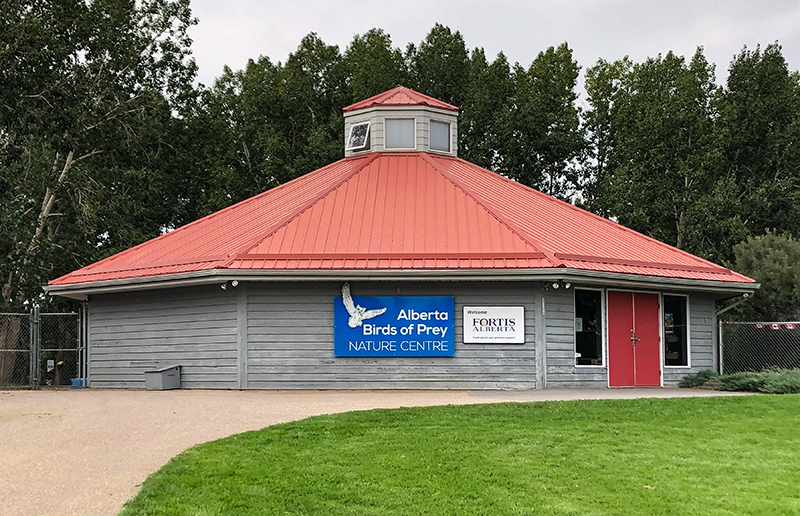 The Alberta Birds of Prey Foundation began in 1982 when there weren’t any wildlife rescue endeavours operating in Western Canada. Colin has been rescuing, rehabilitating, and releasing birds of prey back into the wild for almost forty years. Birds with permanent injuries or those that can’t be released have been given homes at the centre, a beautiful spot in southern Alberta, right in the middle of a reclaimed wetlands area.
The Alberta Birds of Prey Foundation began in 1982 when there weren’t any wildlife rescue endeavours operating in Western Canada. Colin has been rescuing, rehabilitating, and releasing birds of prey back into the wild for almost forty years. Birds with permanent injuries or those that can’t be released have been given homes at the centre, a beautiful spot in southern Alberta, right in the middle of a reclaimed wetlands area.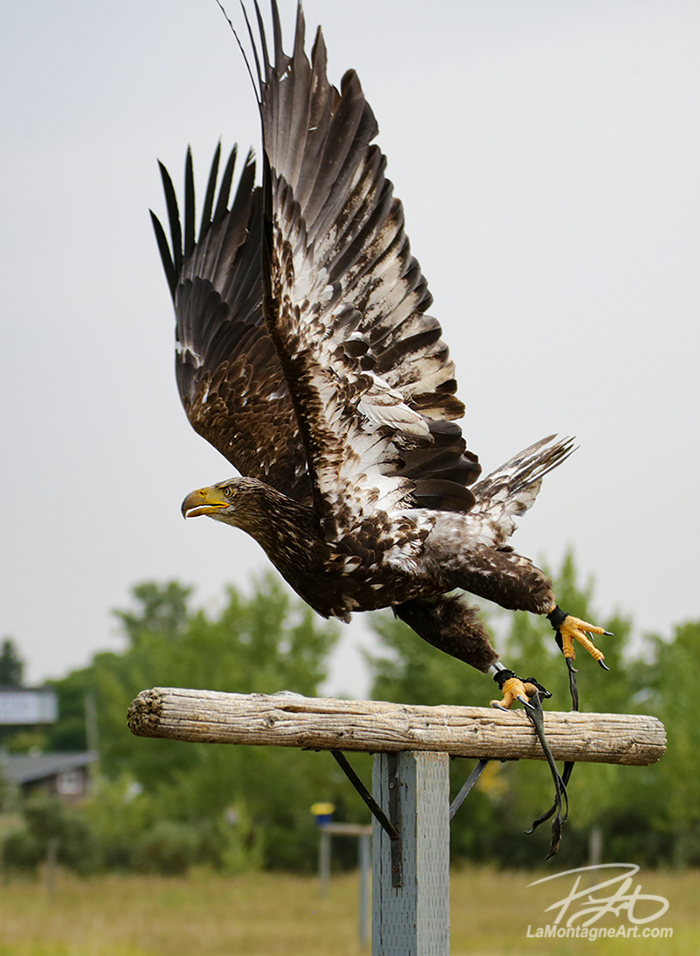 As with any non-profit operation, caring for the birds is only half the battle, and it’s a never-ending quest to raise enough funds and resources. To attract people to the centre, it must be safe, appealing, and well-maintained, a feat they have managed well. The Alberta Birds of Prey Centre is an attractive, professional, and welcoming facility. All the enclosures, aviaries and structures are top-notch, serving as housing and rehab areas for the birds and an educational facility for the public.
As with any non-profit operation, caring for the birds is only half the battle, and it’s a never-ending quest to raise enough funds and resources. To attract people to the centre, it must be safe, appealing, and well-maintained, a feat they have managed well. The Alberta Birds of Prey Centre is an attractive, professional, and welcoming facility. All the enclosures, aviaries and structures are top-notch, serving as housing and rehab areas for the birds and an educational facility for the public.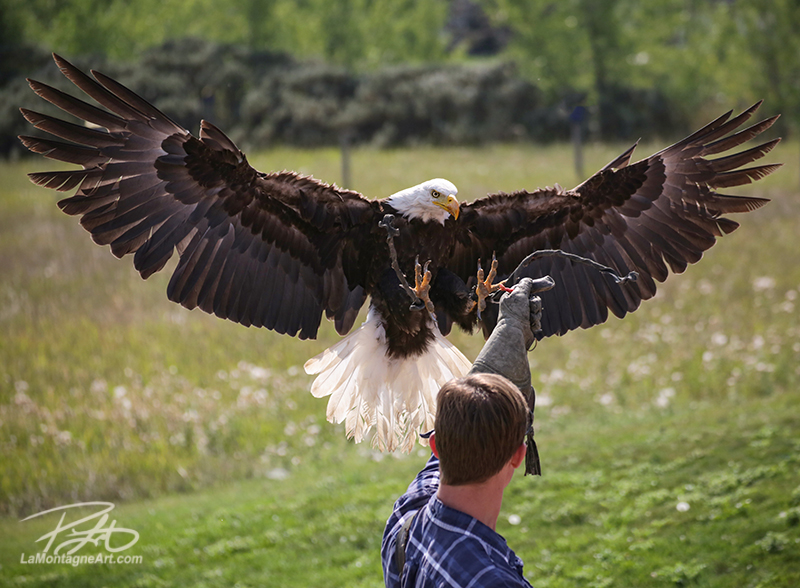 I’ve wanted to get down to the centre more than once this summer, but as with all things these past many months, best intentions haven’t always aligned with feasibility. Plagued with long stretches of record-breaking heat, a thick choking blanket of wildfire smoke for weeks on end and the uncertainty of changing pandemic restrictions, this summer has been challenging. Add long hours in the office working to diversify my business, and I haven’t been able to get away.
I’ve wanted to get down to the centre more than once this summer, but as with all things these past many months, best intentions haven’t always aligned with feasibility. Plagued with long stretches of record-breaking heat, a thick choking blanket of wildfire smoke for weeks on end and the uncertainty of changing pandemic restrictions, this summer has been challenging. Add long hours in the office working to diversify my business, and I haven’t been able to get away.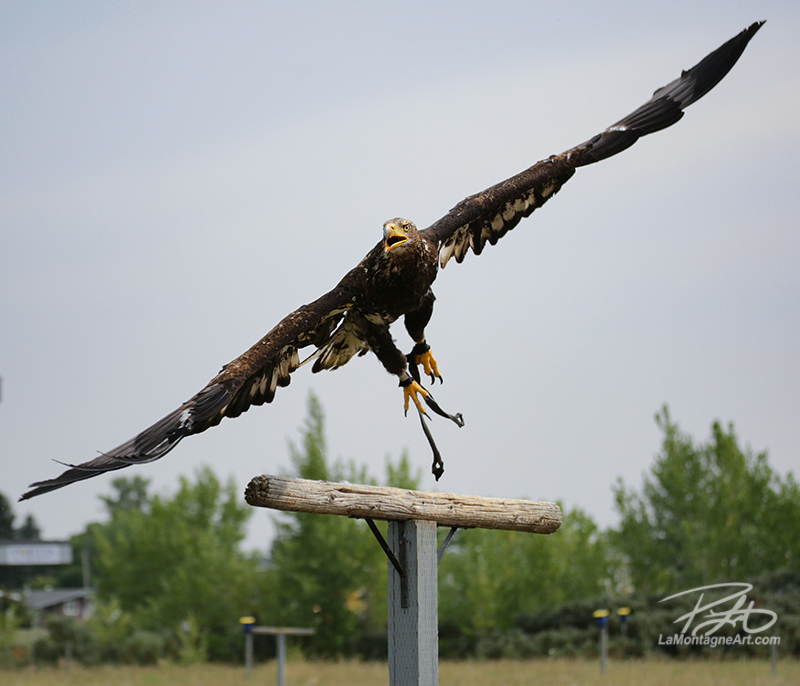 Over two days, I watched them fly a mature bald eagle, a juvenile bald eagle, and two red-tailed hawks. Bald eagles don’t get their full head of white feathers until four or five years old. One of the staff suggested on the second morning that I lie down on the ‘runway’ to take some head-on shots of the red-tailed hawk. To take advantage of a cushion of air just above the ground, the birds drop down low when they’re flying back and forth, only climbing again at the end.
Over two days, I watched them fly a mature bald eagle, a juvenile bald eagle, and two red-tailed hawks. Bald eagles don’t get their full head of white feathers until four or five years old. One of the staff suggested on the second morning that I lie down on the ‘runway’ to take some head-on shots of the red-tailed hawk. To take advantage of a cushion of air just above the ground, the birds drop down low when they’re flying back and forth, only climbing again at the end.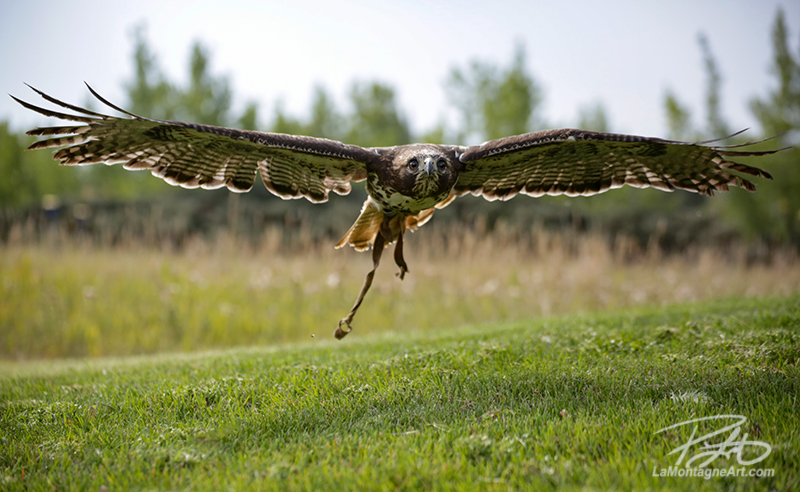 I could write a few thousand more words on their important work and all I learn whenever I visit the Alberta Birds of Prey Centre. The staff share some fascinating and amusing stories during the flight training presentation and are always available for questions from visitors. Nothing is off-limits, and they’re more than willing to talk about the challenges they face each day while caring for these birds.
I could write a few thousand more words on their important work and all I learn whenever I visit the Alberta Birds of Prey Centre. The staff share some fascinating and amusing stories during the flight training presentation and are always available for questions from visitors. Nothing is off-limits, and they’re more than willing to talk about the challenges they face each day while caring for these birds.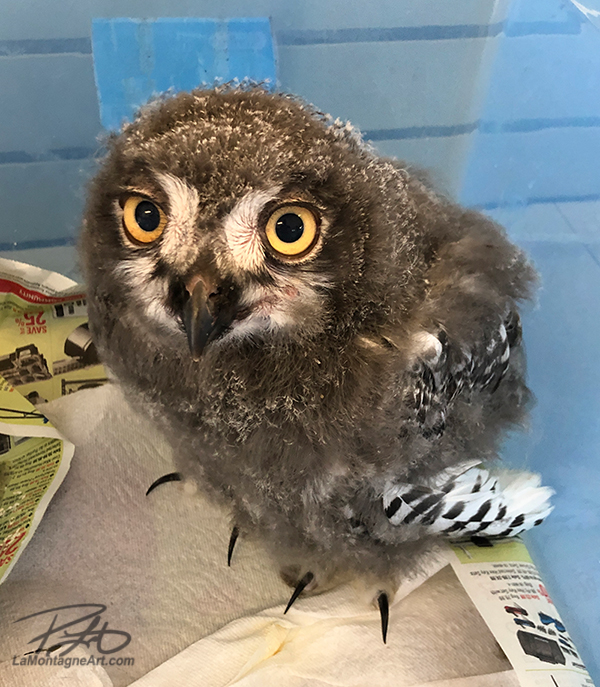
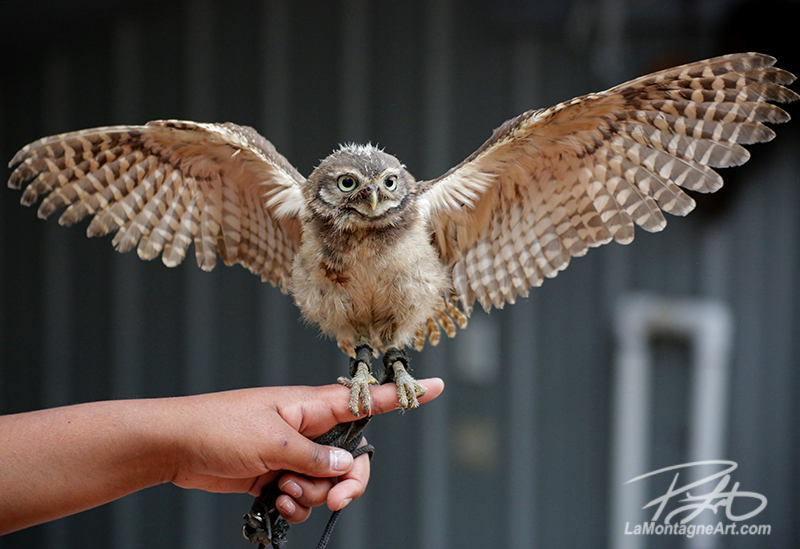
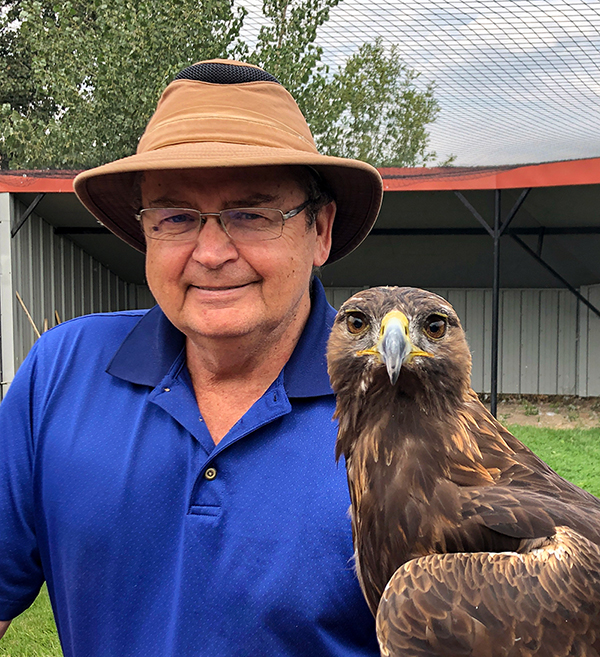
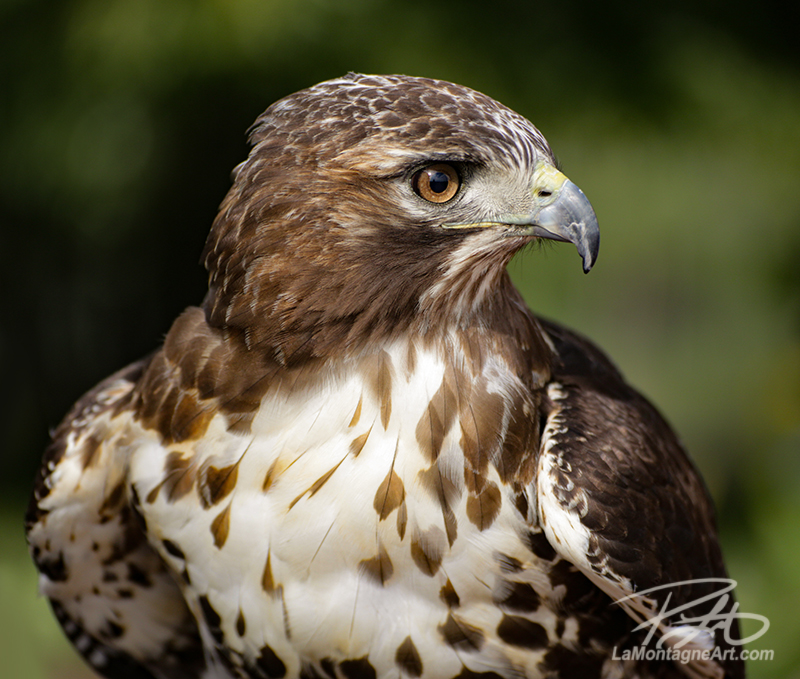 Best of all, I finally have more than enough shots of a red-tailed hawk, so many good ones that I’ll have a hard time deciding which to use. Or maybe I’ll have to paint more than one. It’s a good problem to have. Feathers are much harder to paint than fur, especially when intricate patterns are involved, so don’t expect a painting anytime soon. It’ll likely be a winter project, but one I’m eager to start.
Best of all, I finally have more than enough shots of a red-tailed hawk, so many good ones that I’ll have a hard time deciding which to use. Or maybe I’ll have to paint more than one. It’s a good problem to have. Feathers are much harder to paint than fur, especially when intricate patterns are involved, so don’t expect a painting anytime soon. It’ll likely be a winter project, but one I’m eager to start.

